#danganronpa ryoko
Explore tagged Tumblr posts
Text
Blood loss and wine has ought to make one dizzy..




For @princescar's dtiys!!
My first dtiys!! I love this concept and honestly got so much motivation from it. It took probably 10 hours and all of it is hand drawn!! Hopefully the lace can be appreciated it was not nice🥲🥲
I havent drawn Ryoko ever and its my first time drawing matsuda in a year.. i loved designing this dress, i took my main inspo from gothic lolita fashion because auugh j fashion auughh............
I had so much fun with lace and ruffles and blood!! I cant imagine matsuda not being dizzy... maybe its just me lol.
#art#my art#artists on tumblr#MatsunashiBloodThirst#dtiys#danganronpa#dangan#dr0#danganronpa 0#ryoko otonashi#danganronpa ryoko#yasuke matsuda#yasuke x ryoko#matsunashi#vampire#vampire au#danganronpa fanart
76 notes
·
View notes
Text

My entry for @princescar dtiys!!!
I’m not the biggest fan of how it turned out but oh well! :3
#matsunashibloodthirst#danganronpa#freshyart#danganronpa zero#ryoko otonashi#otonashi ryoko#danganronpa ryoko#ryouko otonashi#yasuke x ryoko#drunk matsuda#yasuke matsuda#matsunashi#matsuda yasuke#danganronpa yasuke#dr yasuke
53 notes
·
View notes
Text


Step one, do my highlight
Make me shine so bright in the moonlight
17 notes
·
View notes
Text


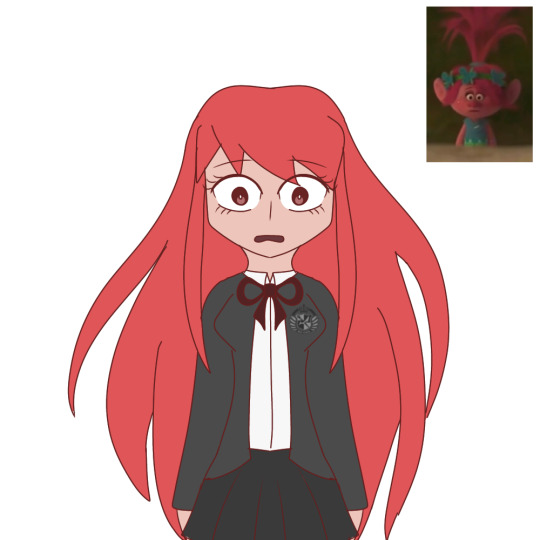
I would love a Danganronpa musical centered around Hope’s Peak Academy.
Imagine all the songs Nagito would sing about hope and his luck, Junko having a villainous song about despair, Kazuichi singing about Sonia while everyone groans, Hajime having melancholic songs about not having a talent…
#danganronpa#danganronpa fanart#no despair#danganronpa comic#old comic#danganronpa 0#danganronpa zero#yasuke matsuda#matsuda yasuke#ryoko otonashi#otonashi ryoko#yasuke x ryoko#danganronpa ryoko#danganronpa art#danganronpa au#trolls meme#matsunashi
50 notes
·
View notes
Text

Have a Ryuko Otonashi future foundation design
10 notes
·
View notes
Photo

Identity again
36 notes
·
View notes
Note
Ryoko Otonashi from Danganronpa Zero?



SUBMISSION RULES
THE SINS
4 notes
·
View notes
Text
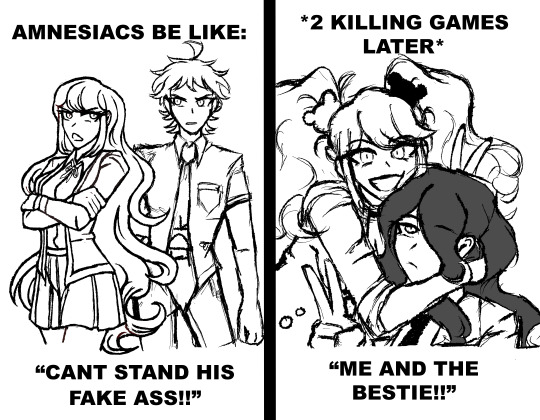
Actually really like the sketch for this, might actually make it two separate drawings.
#danganronpa#junko enoshima#dr0#ryoko otonashi#izuru kamukura#hajime hinata#scarposts#if tumblr bugs out and starts sending out a shit tone of posts identical to this one#you didn’t see shit ok#ill fix it#scardraws
1K notes
·
View notes
Text
In-Depth Character Analysis On All The DR Characters Because What, Are You Gonna Try And Stop Me? Who Are You, My Mom? Yeah, I Didn't Think So- Part 5: Junko Enoshima

Oh boy, this is gonna be a big one. In fact, I wouldn't be surprised at all if this turns out to be the longest analysis in this entire series of ~100 characters. Why did I not save her for last. Why is this part 5. Why do I do this to myself-
Jokes aside, I am so so so excited to make this; Junko has become the face of this franchise for a reason, and the depth of her character and role in the series as a whole is massive. I won't be surprised if this takes over a month to complete. In fact, just for fun, let's track it. I'm starting the analysis on 7/5/24. When will we finish? Nobody knows!
(Final edit Crane here. It has been more than 5 months. Christ.)
This analysis uses only official material for the sake of analyzing the character, primarily sourcing official English localizations. It'll be um, lengthy, to say the least, so if you aren't that interested, just keep scrolling. Also, if there's even one canon installation of Danganronpa that you haven't played/watched/read yet (THH, DR0, SDR2, UDG, DR3, and/or V3) don't read this; the ripple effect of Junko in every corner of the franchise will be discussed and thus, there will be spoilers aplenty.
Also, a disclaimer that though I try to remain as objective as possible with these analyses, it will be at its core, an interpretation. Not everything will match up with how you interpret it, and that's okay! I don't claim to be perfect, and this isn't an infallible source of canon, only my interpretation of the source. Let's get into it!
Foreword
Real quick, before we get too far in: readers of my previous analyses know that I normally try to move in chronological order of release and events in-game to keep the analyses easier to follow. Due to the nature of Junko's characterization and the fact that she's present throughout the entire series, that isn't really possible here, as to talk about any one aspect of her, I may need to pull from multiple installations. I'll be sure to cite where I'm pulling from and provide evidence where necessary, but it definitely won't be perfectly in order by release or timeline. So hopefully it won't be too messy. Also, characters very closely tied to Junko, like Monokuma, Ryoko, Mukuro, etc. will be analyzed separately at a later date, so those sections may end up feeling incomplete as a result. For the sake of releasing this before 2025, I need to cut corners a little bit and focus primarily on how these relationships affect Junko, and not the other way around.
Part 1- Monokuma
In order to understand Junko, you must first have a basic understanding of Monokuma, mascot of the Danganronpa series and self-declared Headmaster of Hope's Peak Academy. Monokuma introduces himself to the cast as their superior and oversees the killing games, providing motives and passing judgement on the class trials, all while reveling in the Despair of the students. There are multiple iterations of Monokuma, but most of them exist in order to carry out the killing games without issue.
Like Junko, Monokuma remained a staple of the franchise, appearing in every official installment, whether he was being actively piloted by Junko or not. As we see in DR3: Despair Arc, she personally designed him to become the face of her movement of Despair, and thus, he was used to carry out her will at every turn.

1.1- Trigger Happy Havoc
In the first DR game, Monokuma was just a robot piloted by Junko. His mannerisms were a character invented by her to appear as the psychopathic Headmaster, but regardless, her true nature of Despair is directly infused into the character as she acts him out. Through him, she's able to reveal hidden information about each of her classmates and torment them personally, all without them knowing she was once a dear friend to them. As a robot, though, he came with drawbacks- Junko couldn't pilot him and watch the cameras at the same time, and once the charade of his all-seeing Headmaster was seen through by Kyoko, he lost most of his power. Thus, Monokuma's existence was designed to deceive, and could only function through deception. He created the illusion that hope was outside, that escape was solely on his terms, and that the class had no unification- all according to Junko's design.
1.2- Goodbye Despair
When the sequel game arrived, Monokuma was once again a character being played by Junko. Unlike last time, however, the two had blended together, becoming one and the same. This Monokuma was a Despair Virus, created with Chihiro's Alter Ego technology, and implanted into the Neo World Program with the intent of continuing the real Junko's plans for the spread of Despair. This version of Monokuma is extremely similar to the previous in terms of its personality and beliefs, but appears much more powerful within the artificially generated world, now able to apparently power-up, bleed, and transform plushies into duplicates without logical explanation.
Rather than targeting certain themes in an attempt to teach Despair, this Monokuma created directly-targeted motives, attempting to use class 77's personal connections to a whole other level and banking on the fact they were friends, rather than try to cover it up. He also acts as if they're his dear friends and like they're on the same side, directly inverse to his apparent attitude towards class 78. This is intentional, though as to why, we'll get into much later.
1.3- Ultra Despair Girls
Rather than being present as a character, Monokuma exists solely as mascot in this game, as thousands of Monokumas are programmed and piloted to slaughter the majority of adults in Towa City. He exists solely as a tool used by the Warriors of Hope.
In chapter 4 of the game, you get the reveal that all the physical Monokumas that exist were built and sold in Towa Group's factories, and later, that Monaca Towa was directly responsible. This exists to demonstrate how Junko was able to financially and physically afford the amount of power and technology she accrued in her crusade for Despair. More on this later.
1.4- Danganronpa 3- Future Arc
Near the end of the first episode, Monokuma seemingly appears on a monitor in the meeting room of Future Foundation's HQ, announcing his survival and a return of the killing games, starting with the Future Foundation higher-ups. At the beginning of the following episode, an act is put on between this version of the character and "Miaya Gekkogahara", as they fake an argument where Monokuma alters her avatar Usami into Monomi, making it appear as though he's again being piloted by a real person from some remote location.
As the season comes to a close, though, we learn that it was the chairman who set up the killing game, and that Monokuma's appearance, along with the video that would play during every nap, were falsified recordings, aided in part by Monaca Towa pretending to be Miaya. Thus, his likeness was used for a cheap recreation in an attempt to manipulate one person and kill nearly everyone else in charge of the Future Foundation, all set in motion by Junko's own brainwashing videos.
1.5- Killing Harmony
This is the only version of Monokuma that Junko herself doesn't have a hand in recreating, and is the only time he exists solely as a robot personality of his own accord. Created by Team Danganronpa, he's a physical conception of the fictional character Monokuma in-universe, and thus, is a character in his own right. Birthed by a Motherkuma machine for the mastermind's benefit, Monokuma acts once again as Headmaster, but a significant amount of soul is noticably absent from the presentation. This is in part due to the amount of focus on the Monokubs, using their unique characteristics for comic gags with the cast in the way Monokuma used to in the previous games, and his appearance feels like more of a checkbox than an actual return of Monokuma. Simply put, without Junko's influence, Monokuma's character becomes more flat, and starts to fade into the background in a convoluted mess of references and callbacks. All of which is done on purpose- Monokuma is a facet of Junko, and without Junko, Monokuma becomes empty.
Part 2- Character Design
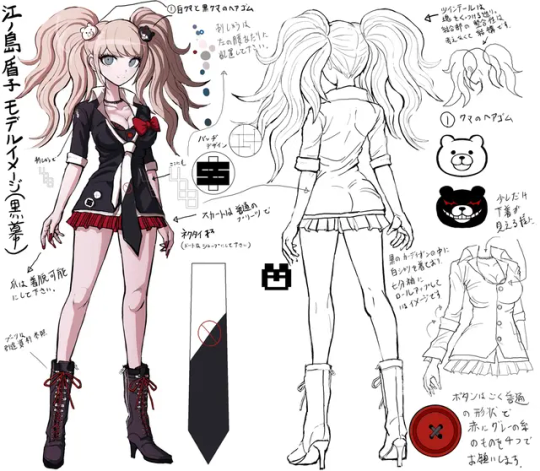
Junko Enoshima is designed as a gyaru, a subgenre of fashion known for its more 'rebellious' style. She's dressed in a modified uniform, with a black jacket with her sleeves rolled up and unbuttoned, allowing her cleavage and bra to show, with a black-and-white tie, a red bow, and a red plaid miniskirt. She also has Monokuma pins holding up her ponytails- one with the white half, and one with the black half. Asymmetricality and the use of exclusively black, white, and red all align her with Monokuma, an asymmetrical black-and-white bear with a red eye. She has styled blonde hair and blue eyes, and has the title of SHSL Gyaru, or Ultimate Fashionista.
2.1- What's A Gyaru?
Gyaru as a fashion style first originated in the 1970s, emerging from Japanese women's nonconformist desire to embrace their own sexuality and rebel against societal standards of the traditional housewife. As time passed and more women latched onto the trend, it became a major point of discussion, initially shaming these women for being too racy or delinquent, before shifting to an increase in streetwear fashion and being recognized as its own genre of fashion, evolving with new subgenres as time continued to pass. It went from a wholly shameful style to an expensive, trendy one as expressly gyaru clothes started to be made and sold in stores. The increase in popularity also led to discussions of placing laws against child prostitution, as younger girls were getting into the expensive fashion and started finding alternative ways to afford this showy clothing.
There are many, many subgenres of gyaru known, but Junko Enoshima is specifically referred to as a kogal or kogyaru, a high-school gyaru. Her school uniform is modified into a showy jacket and miniskirt with big bows, she wears knee-high boots, and her hair is blonde, implied to be dyed based off of the common hair-dying of kogals. In DR 0, we also see her with red hair and eyes as opposed to the blonde and blue, suggesting that red may be her natural hair and eye color. Kogal culture has a lot of stereotypes around it regarding the extracurricular activities of the girls who subscribe to it, but the general idea around it is for the girls that participate in it to break social norms and claim their sexuality for themselves to get what they want, all within a consumerist guise. This type of mentality matches Junko extremely well, as a character bent on breaking the world for her own pleasures by advertising herself as Despair.
Part 3- The Mastermind Reveal (THH)
We don't actually meet Junko Enoshima until the final showdown in THH, though we are well-acquainted with the idea of her before then, as not only do we meet an imposter-Junko in the first chapter, but her magazines are specifically shown to us in the intro of the game, and are scattered throughout the school(laundry room). There are also little hints as to her identity as mastermind sprinkled into the game.

"Whenever I spot a cute girl, I have a tendency to stare. I can't help it- I just gaze with intensity. The other day, I rode my bike to the train station... I was in the bathroom, just looking at myself in the mirror..." -Monokuma Theatre, THH
Despite these hints, the characters don't know who the mastermind is yet, only being able to reason at her motivations for the killing game and why it came to be based off of what clues Monokuma leaves out for them, like how the main track that plays when interacting with Monokuma is called '100 Mile Junk Food Dash'.
"But first, I have a question for you... Who are you? What do you want from us?" "Well, if you really must know... Despair. That's all." -Kyoko Kirigiri & Monokuma, THH
"And for those of us who represent hope to kill each other and sink into Despair... The mastermind wants the world to see that, to try and prove that Despair is better than hope." -Kyoko Kirigiri, THH
We know that whoever this mastermind piloting Monokuma is, they're someone that's engineering this entire killing game expressly to spread Despair. With the knowledge that the killing game is being televised, that Despair isn't just for the students, but is being put on display for the entire world to see. Manufacturing and televising such a sadistic game using public figureheads under governmental protection is a behavior akin to terrorism (Despairism?) and is an act that, by itself, seems nigh impossible for some high-school student to be capable of. Yet, we know it is a high-schooler- Monokuma insists that the only people involved in the killing game are the 16 students of their class.
Through the investigations of chapters 5 and 6, it becomes increasingly more apparent that whoever this SHSL Despair is, Junko has some level of involvement. For example, more observant players will recognize Mukuro's corpse almost immediately as 'Junko's' from chapter 1, as her bright red nails and the same high-heeled, red-laced boots are clearly visible. And while this doesn't immediately incriminate Junko herself, it does at least call into question the identity of the dead SHSL Despair, as the body being Mukuro's isn't ever really contested(save for a 'dumb Hiro' gag insisting it's Kyoko while standing next to Kyoko).

"And don't forget about the Fenrir tattoo. There's absolutely no mistake... Our victim in this case is, without a doubt, Mukuro Ikusaba...!" -Kyoko Kirigiri, THH
Throughout the final investigation, the player's job is to solve 'all the mysteries of the school', AKA their erased memories and the identity of the mastermind. This investigation intentionally doesn't talk about Junko, voiding her involvement to the point that her own face is scrubbed from the evidence. The hints given by Monokuma picture Junko's face covered up in every photo, and the recordings of the students agreeing to live in the school is cut off before it can cycle over to her. It's not her presence that matters, it's the lack of presence, because we haven't actually met her yet, juxtaposed to the repeated mentions of Mukuro, a girl who'd been a part of the group since the very beginning without anyone realizing.
When we do realize this, it comes with the realization that Mukuro's and 'Junko's' body were one and the same, and with Kyoko's old pocketbook revealing that "Despair walks among us, and so we survive... There's a second 'Despair'", we can come to the conclusion that the reason the mastermind was able to pull this off was because there was actually more than one, working in sync, and thus, the reason both bodies were one was because they were the SHSL Despair together.
Part 4- The Despair Sisters: Mutual Abuse (CW: Incest)

Despite the fact Junko was the brains behind the operation, there was never really a time where she was working alone towards Despair. She was actually one of two Ultimate Despair- as she called them, the Despair Sisters. Her twin sister, Mukuro Ikusaba, was Ultimate Despair as well, and assisted her every step of the way.
In her first appearance, we don't actually get to know anything about her, as she spends her time with the class pretending to be Junko. As such, any and all information gathered on Mukuro is given by someone else- official school records state her title and physical attributes, and Junko tells us her role as Ultimate Despair and goes on about her flaws.
"She had what I call the 'three atrocities'- atrociously rank, atrociously filthy, atrociously repulsive. It was atrociously clear just how out of touch she was with the rest of society." -Junko Enoshima, THH
"The older sister, tough and proud, that was Mukuro. The younger sister, smart and cute, that was... Hyaaaahaha! Me! Junko fucking Enoshima! And together, we were the Despair Sisters! AKA, the Ultimate Despair!" -Junko Enoshima, THH
Mukuro reappears as herself in DR 0 and DR3's Despair Arc, as well as the official AU novel DR IF. In these, we get more insight into her feelings, and see her display an overt attraction to her sister at multiple instances.
"Consumed by ecstasy, even Ikusaba-san's breath became ragged. 'Only I am able to understand her. That's why she needs me. She still hasn't realized that but, maybe she's only pretending not to realize. Ufu, that's because she's so shy. Ufufufu.' Seeing this intoxicated Ikusaba-san continue to talk like that repelled me. I knew that she definitely didn't have normal feelings for Junko Enoshima". -"Mukuro Ikusaba" & Ryoko Otonashi, DR 0
youtube
This is pretty obviously incestuous in nature. She blushes at her sister's attempts to kill her with an ice pick, has an internal dialogue about how much said attention affects her, and 'goes into ecstasy' talking about her sister's madness. It's intentionally uncomfortable because it's intentionally incestuous*. I've seen arguments for Mukuro's behaviors being out of character and only there for fanservice in the anime, but this behavior being found in DR 0 first pretty clearly contradicts that. I've also seen an argument for Mukuro's behavior being an act meant to make Junko feel Despair and not having any legitimacy. The crux of the argument comes from the assertion in DR IF that Mukuro is able to numb her emotions in battle, so therefore, she could also mimic such an attraction when around her sister. This argument quickly falls apart as well, considering that a) she has both internal and external dialogue directly referencing her attraction where Junko can't actually hear her, and b) going numb in the heat of battle is not at all the same thing as faking sexual desire outright.
*(Mukuro being incestuous is immediately relevant to the way the Despair Sisters interact with each other, and understanding that I'm talking about their relationship under the lens that she is will hopefully prevent questions about why I'm talking about them as I am throughout the analysis, particularly when she pops up in other sections here and there later. Please do not go into the replies or reblogs and explain to me why I'm wrong; you are not going to change my mind. Believe it or not, I don't like Despaircest either, but that doesn't mean Mukuro's behavior in canon is some accident to be shrugged off. These are meant to be OBJECTIVE analyses. I'm going to look at what the games and novels and anime are presenting, whether I actually like all the points or not.)
Junko Enoshima yearns for Despair. Despair is her reason for being, and everything she does, she does with the intent of eventually bringing Despair upon herself. That pain of Despair is the strongest feeling in the world to her. And the way she treats Mukuro directly stems from that desire. Despair stems from grief, and what brings more grief then the people you love most despising you? Mukuro is her twin sister, who stands by her no matter what. Junko even tests this, having her kill an entire class of students to prove her strength and loyalty in manga series Killer Killer(though, admittedly, Killer Killer hasn't been confirmed as canon to my knowledge, it still aligns with what we know for both characters without altering anything about their characterization).

Mukuro is capable- very capable, and definitely has the ability to betray her, or even kill her if she wanted to. So at every turn, she treats Mukuro like garbage, actively trying to kill her with an ice pick when they first reunite and talking down to her at every opportunity. She describes her sister as fat, flat-chested, ugly, stupid, a pervert, any insult she can think of. She critiques her murders, chastising her when she kills the guards in Despair Arc while looking for Izuru for not doing a clean enough kill. But despite all this, Mukuro never strays from Junko's side. She continues to fawn over her, not just taking all the abuse, but displaying an attraction to her Despairing nature, and refuses to leave her side, the exact opposite reaction of what Junko wants to see from her.
"'Yes, she really is ridiculous…to the point of Despair, she's the lowest, worst sister ever but…that's why I can't leave her alone. That's why I have to help her. After all, I'm the only one who can understand her.'" -Mukuro Ikusaba, DR 0
This kind of loyalty isn't Despair-inducing at all; that dedication is exactly what she predicted from her obsession. What Junko actually wanted from her, we get a brief taste of when she speaks in the final trial of THH- "Because naturally, she turned out to be the letdown of the family. Leaving me behind to run off and join some band of mercenaries... Such a disappointment." The Despair of abandonment, of betrayal, was what she wanted. But Mukuro is too loyal for her own good. That's just annoying.
Mukuro is emotionally abusive, or would be if her sister were anyone but Junko, lusting after her own blood sister in a way that's considered taboo and perverse. This lust develops from an obsessive need to stay loyal to her sister, while Junko verbally abuses her right back, talking down to her and keeping her under her heel, mocking her at all available opportunities and treating her in a way that would make anyone else feel like shit. Not so for Mukuro, the person who's been next to her since birth and has stood by her side through all her Despair. They abuse each other, but there's an unspoken bond that allows for their relationship to function regardless, albeit in a twisted way. They're sisters, equally matched, and together, they become two halves of a whole terrorist. Despair is toxic for anybody, and Junko's own affliction leads Mukuro's obsessiveness to chain herself to Junko's side. They're twins who were born together, after all, and who else could even begin to understand Junko's Despair?
4.1- Despaircest & Anime (CW: Still Incest)
We've seen the relationship that Mukuro and Junko have with each other, both as it was alluded to in earlier depictions and how they interact with each other immediately in the anime. And, despite the fact that it wasn't directly shown to us before said anime, there were hints of the intention of a one-sided incest in DR 0, as well as repeated examples of Junko treating her sister poorly on a surface level and how much she actually valued her within THH and DR IF. Going into the anime, this would be the first time we'd actually see Junko and Mukuro interacting directly with each other as themselves. This could have been the time where we get to see just how twisted their relationship actually is, getting to see how, and maybe even why, they began treating each other in this way. We could've gotten more of a glimpse into their backstory, when they separated, and the inherently self-destructive cycle they pull each other into. Here's what we got instead:
youtube
Rather than actually explore the real depth of their fucked up relationship, the anime elects to play it up for the sake of fanservice. This is admittedly an ongoing problem in most of DR3, as it throws most of its female characters into very compromising positions and focuses in on their bodies when they're being brutalized in one way or another and not doing the same for the men, but that only makes this lack of tact worse. There's no interest in actually addressing this darker plot point beyond the most basic surface level because to go any deeper would make it more difficult to get your rocks off to it. It's a shame to create such a conceptually fascinating relationship that would've made for a fantastic way to develop Mukuro as a villain more and Junko as a human more, and just use it for cheap servicy gags. I feel like it isn't an unreasonable statement to say that this was lazy. Danganronpa is supposed to be a series that explores dark topics and uses them to create tragedy and develop its characters. In the face of that, this was cheap.
Hell, this very scene says it itself: they're using Despair to create a fucked up pleasure for the viewer! The incest being played up for fanservice instead of acknowledging Mukuro as a character is, from a meta perspective, Despair-inducing. To the writers and to Mukuro, Mukuro doesn't matter outside of Junko. Her suffering is pleasurable to the audience in a way that's outside of social acceptability, in the way she needed to be used for so long just to exist. BUT WE ALREADY KNEW THAT. We didn't need to boil Mukuro down to an extension of Junko; Mukuro already did that to herself. Maybe this is just me complaining because it's not what I wanted to see from this plotline; I'm not ashamed to admit that. I think being able to acknowledge your biases as a consumer is important when critically looking at a piece of media. But I stand by my assertion that the presentation of this point is sloppy and surface-level, and should've been handled with more tact.
Part 5- The Murder of Mukuro Ikusaba
Junko treats her sister like trash, but despite this, we know that she does respect her. In fact, she has to consider Mukuro as an equal, because if she didn't, she wouldn't hold her as equal parts Despair as herself. Yet, when she reveals herself at the end of THH, she affirms that they were equals- both the Despair Sisters, who worked together("We were the Ultimate Despair, ya know?"), and in the same breath, describes her atrocities and mocks her memory as a disappointment. She sees Mukuro as not just a person, but a legitimate danger and a harbringer of Despair that's worth recognizing. Thus, as a sister, it causes her Despair to prevent anyone else from seeing that and paints Mukuro as just another victim of hers("She was nothing more than a bit player, an extra unworthy of lines."). Playing up her betrayal of Mukuro and her supposed disdain for her sister strips her of her agency as Ultimate Despair to their classmates, without letting them see her true self either. She becomes just another faceless victim, and Junko holds the memory of the true Mukuro Ikusaba, merciless killer and all, wholly to herself.
In the au light novel DR IF, Makoto remembers Mukuro, and inadvertently saves her from this fate. This leads the rest of the LN to focus on Mukuro and her relationship with Junko from her perspective as she copes with the reality that her sister betrayed her. It differentiates herself from Despair, and from her POV, we learn how she thought Junko felt vs how she actually did. Junko lives her life hopelessly- she's too smart for her own good, and can predict the moves of society and of the people around her. Mukuro believed she was the only one who fully understood Junko, so she acted perfectly in accordance with her plans, never once rebelling or going against her. She tries to convince herself to crave her sister's Despair so she would feel Despair from that desire, so she can remain close to her. But that wasn't the Despair Junko wanted. All along, what Junko wanted was for Mukuro to betray her because of her love for her. Without Mukuro, her plans would fall apart. She wouldn't be able to break into Hope's Peak as she did, nor would she be able to protect herself when attacked. Mukuro was what allowed her to gather as much power as she did over Hope's Peak, infiltrating and gathering blackmail, kidnapping chairmen, and so on. Mukuro was the brawn to Junko's brain. So the one thing that could destroy her plans, and bring her a Despair greater than any other, would be if her other half abandoned her. In DR IF, she learns this as Junko finally tells her that she loves her to her face. She breaks Mukuro's chains, and sets her free from her Despair to heal without her by rejecting her help, in a roundabout, Junko-esque way. In canon, though, Mukuro doesn't get to have that realization. She doesn't have the emotional intelligence to put those pieces together herself, and tired of waiting, tired of hoping, Junko gives herself an alternate Despair- the Despair of killing her own sister in cold blood.
The identity and death of Mukuro exist to keep the identity of the mastermind shrouded in mystery. Within THH, she's someone who's important from a narrative perspective- not as a person, but as an entity- designed to facilitate the reveal of the real Junko. Her murder is thus a murder of both her literally, and the murder of her personhood, as Mukuro is the one character that never gets to introduce herself. Junko makes it so, and wipes the memories of the class so that Mukuro Ikusaba will no longer exist outside of herself.

We're introduced to Mukuro not as Mukuro, but as Junko, wearing a wig and costume to appear as similar to her well-known sister as possible, and acting out her sister's fashion diva personality as convincingly as possible. It's tropey and typical of a fashionista- she cares about her looks a little too much during a killing game, acts like she's above the killing game and wants out of it, and explains away any imperfections as 'oh you haven't heard of photoshop before?'
There's no reason not to trust her at that point because no one thinks they've met her before. In DR IF, Makoto is able to recognize her through the outfit and charade, but that's only with his memories intact. Those memories have been thoroughly covered up by Junko in reality, and so the Mukuro Ikusaba she knows dies invisibly, betrayed and unrecognized as her classmates and friends mourn her killer instead. Junko gives her sister the worst Despair of all- being truly forgotten. After this, no one would remember who she was ever again, locked away in the mind of the person who'd never show her affection.

Not only that, Junko killing Mukuro and emphasizing how little she cared about that decision served to make the survivors hate her- her old friends now despised even looking at her, and brought her more Despair.
"Which is precisely why I killed her- to meet everyone's expectations." "That... can't be your only reason, can it?" "Well no, of course not. I also did it to avoid becoming bored." -Junko Enoshima & Makoto Naegi, THH
Despite that, being the one to kill Mukuro brings her a Despair like no other, with her describing it as "super super super super super Despair. No, more than that... Super super super super super super super super super super super super super super super Despair... It just feels... so... good..."
Junko did love her sister, and made everyone else she loved believe otherwise so she could feed off the Despair from their hatred.
Part 6- Ultimate Despair and Junko Enoshima
"The Ultimate Despair... A group of people who caused the Tragedy one year ago... Those same people put together this killing game and began broadcasting it around the entire world. The most desperately awful group of people ever... *That* is the mastermind's true identity." -Makoto Naegi, THH
Make no mistake- despite what the surface level of the series would have you believe, Junko Enoshima isn't the Ultimate Despair. There is no the Ultimate Despair because Despair isn't confined to any one person. Rather, Junko Enoshima is afflicted with Ultimate Despair. Despair, by nature, is grief. It's a pain inflicted by the death of hope, whether that be through the loss of a dream, a person, or whatever else. You grieve that loss, and it takes the form of Despair. Ultimate Despair takes that grief and amplifies it, destroying any sense of self and replacing it with the desire for more Despair. This is the type of Despair that Junko Enoshima feels, and thus, uses her own talents to embody it and spread it. It's a bold claim to make, I realize, that she isn't the SHSL Despair she defines herself as, but it's the basis this entire analysis leads to, and as the evidence over the course of the series develops her character more and more, it goes from some theoretical musing to legitimate design, all the way through to the end of V3. Though she immerses herself within Ultimate Despair, she herself is not Despair incarnate like she'd have you believe.
As we see her in THH, Junko is repeatedly hammered in as 'one of two' by the narrative. It's not just Junko that's formed Ultimate Despair; it's also Mukuro, and they're not referred to as 'Ultimate Despair and her sister', they're 'the Despair Sisters'. For all her charisma she displays, she alone isn't responsible for the Tragedy. Everyone is capable of feeling Despair. It's that foothold Despair has within her that creates an 'Ultimate Despair'. And while yes, Junko was definitely the most afflicted with Ultimate Despair, she didn't get as far as she did just by being horny for grief. She has a title, a real one, and it's not SHSL Gyaru. That was her cover, something she could use thanks to her real talent. Her real talent was only ever known by a select few, and to know what that is, you have to dive into the (criminally underrated, may I add) 2-volume novel set, Danganronpa 0.
Part 7- Ryoko Otonashi (DR 0)
(Little disclaimer here: Before I actually talk about the novel, I did want to quickly assert that DR 0 is both a mainline release to the Danganronpa series and 100% canon. Written and released by series creator Kazutaka Kodaka himself in 2011, it was written specifically to fill out Junko's character more. As such, everything contained within them are unquestionably canon to the world and its characters, something critically important to understand when talking about how it pertains to Junko Enoshima. I think just about anyone who's read DR 0 before knows all this already, but for the sake of anyone reading this who hasn't, I wanted to assert that.)
Ryoko Otonashi is the protagonist of DR 0, and is introduced to us as an audience in a 1st-person perspective. While she isn't the only character we follow in this series, she's the only one to speak to the reader straight-up, introducing herself and reacting immediately to the people and events in front of her. This is for good reason, as Ryoko is suffering from some form of amnesia. Not only does she not remember anything about her childhood or her identity, she also forgets things as they're happening. She can't even remember her name, and is only able to recall it by reading the cover of her notebook- 'Ryoko Otonashi's Memory Notebook,' where she's writing down everything in front of her as it happens so she can try to remember later.
Most of the story is told through Ryoko's perspective as she tries to avoid being caught up in some massive conspiracy within the school- all without actually remembering the conspiracy she's avoiding. Junko Enoshima is the one responsible for this, directing her from place to place and slowly forcing her to confront the conspiracy as she starts to figure out who she is and how she fits into it all. She insists over and over again that it has nothing to do with her, that she's innocent and has never met any of these people before and desperately tries to believe it- her memory is gone, therefore she could not be responsible.
But she is responsible, because she's not Ryoko Otonashi. Her real name is Junko Enoshima, and she's the SHSL Analyst, a girl with such a strong logical capacity that given enough information, she can perfectly understand and predict anything. This could be the actions and personality of a person, or it could be upcoming trends in fashion; whatever it may be, Junko is capable of perfectly analyzing and understanding what will happen in any given situation, long before the world does. And that type of intelligence has rotted away her mind.
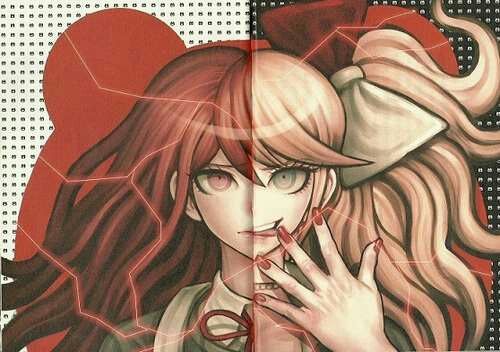
Simply put, the human brain requires stimulation. Boredom is her opponent, and in a world where she can fully understand and predict anything at any time, Junko has nothing to stimulate her, and almost nothing can bring her any joy, because she fully anticipates it. Everything is normal, predictable, boring- it's left her with a case of intense anhedonia. Therefore, the only way she could find any happiness is in a world where that talent is stripped away from her. As Ryoko Otonashi, a girl with no memory, she can remember nothing and therefore predict nothing. Analysis requires data, and a blank slate offers none. Even her name is in reference to this, as 'Otonashii' translates to English as 'no sound' or 'quiet'. Only without memory can Junko's mind be silent and let her be genuinely happy.
Ryoko Otonashi is essentially a personality created by Junko as a test, not just for the people around her, but also for herself. Throughout the novel, Mukuro and Yasuke interact with her with opposing goals- Mukuro pushes her into the fray of Despair she's created, while Yasuke tries his best to keep her eyes and ears covered. Ryoko is in a unique position between the two- she's starting to remember and understand herself again, but is terrified of what she'll find, and wants to hold onto her peace with Yasuke. The ongoing question of the novel, which only reveals itself on a reread, isn't within Ryoko's identity itself. It asks the question of whether or not Junko could have been saved from Despair. And the answer, sadly, is no. Remembering anything for too long makes her forget her happiness, and she falls back into Despair, killing Ryoko Otonashi, the epitome of her peace, with her own hands.
Mukuro and Yasuke act as opposing forces within the novel, as both feel a loyalty to Junko that makes them act in what they believe to be her benefit, and both fail. Mukuro drags her kicking and screaming back into the depths of Despair to bring back the madness she sees Junko as, while Yasuke wipes her mind of everything that made her Junko to remove what plagued her. For Junko, balance isn't an option, and the people within her orbit fall victim to that same mentality.
7.1- Personality Disorders In Danganronpa
I'm not a psychologist, nor do I have any sort of split personality(DID, OSDD, etc). So my knowledge on the subject isn't that great, and everything said within this section should be taken with a grain of salt. But, to the best that I can tell, Ryoko's existence as an alter is sort of... mixed up. Other characters in the DR series (Toko & Genocider) make it pretty clear that Kodaka doesn't really have a fantastic understanding of people with DID outside of how they're stereotyped in the horror genre. And that background knowledge, combined with the presentation of Ryoko in DR 0, makes me think she was likely intended to be an alter, but as one that Junko had almost absolute control over, as at multiple instances, she was able to knock Ryoko out at will, and fully killed her once she'd outlived her usefulness for the experiment. There are parallels to Jekyll and Hyde in that aspect, though of course Jekyll was aware of also being Hyde- an alternate version of yourself created to rid yourself of everything about yourself that you despise is very reminiscent of Jekyll's motivations, down to the permanent erasure of the "good" side by the very end. It's also worth noting that Jekyll and Hyde weren't intended as an example of DID, but rather, an exploration of how every person is multifaceted with good and bad parts, even if modern day interpretations often read it as another example of the evil DID trope from 1960 and beyond(thanks a lot, Psycho).
There are several interactions between Ryoko and Junko that support them being two personalities within the same body rather than just a case of memory erasure. For example, when Ryoko is nearly killed by one of the SHSL Octuplets, Junko emerges just to make sure she isn’t killed, citing it as a minor nuisance.
“‘Upupu, I wonder if I was a bit too harsh.’ The voice said, it sounded close. ‘... But it can’t be helped. It’d just be embarrassing if you died here. After all, you’re the protagonist in this scene for once!’” -Junko Enoshima, DR 0
When Ryoko wakes up in the underground bunker of the Reserve Course cult forming, she comes across a captured member of the Steering Committee. And because she genuinely doesn't know who he is or where she is, he ends up giving her classified information that Junko needed, and the second he reveals it, she's immediately able to knock Ryoko back out and take over once again, having used the Ryoko personality as a front specifically to gain information.
“'The old school building… Kamukura Izuru’s there.' 'P-Please wait..' I ended the conversation prematurely with an interruption. Quickly, I wrote in ‘Otonashi Ryouko’s Memory Notebook’. .... But then… Huh? I suddenly felt an attack of dizziness, I struggled to stay upright. What’s happening?" -Steering Committee Member & Ryoko Otonashi, DR 0
"'Oy, did you hear me?' I didn’t. The beating in my ears was only growing louder, it completely drowned out all other sound, I couldn’t hear anything anymore. I shouldn’t be able to hear anything anymore, and yet I could hear a single, eerie laugh. '...Upupu.'" -Steering Committee Member & Ryoko Otonashi & Junko Enoshima, DR 0
Ryoko's memory of Yasuke is also contingent on whether or not Junko wants her to recognize him, suggesting that to some degree, her memory issues aren't just forcefully induced, but rather, are a conscious choice on Junko's part for Ryoko, as once Junko's plan is in place, she suddenly can't recognize him and is then forced to kill him in self-defense.
"'Are you…talking to me?' He looked exhausted. A face of someone who lost everything. The face of someone who lost all his thoughts, all his senses, and all his emotions. '…You don’t remember me?'" -Ryoko Otonashi & Yasuke Matsuda, DR 0
It's pretty unclear whether this was an intended conclusion from Ryoko's and Junko's behavior in DR 0, or if these are just remnants of Kodaka not knowing how personality disorders work and simply having Junko be so powerful that she can purposefully create, manipulate, and kill personalities at will, but I think looking at it from a more psychological viewpoint like this certainly puts Junko's actions as a manipulator into more perspective. The intention behind Ryoko suggests that Junko's manipulative abilities extended even into her own psyche, almost to a supernatural degree. Do actual systems in the real world function like this? No, but thanks to Toko/Genocider, we know that the representation of DID isn't gonna be good in this series.
If we wanted to put this into a more realistic lens, we could come to the conclusion that Junko's apparent control over Ryoko and the discrepancies behind her existence is a result of Junko having Munchausen Syndrome. Also called factitious disorder, Munchausen is a subconscious psychological condition in which the patient fakes symptoms of other kinds of conditions, whether mental or physical, without realizing they're mimicking the symptoms. Under this lens, we could say Ryoko was a factitious alter that Junko created after Yasuke wiped her memory, hence why she could have control over her over the course of the novel. This was almost definitely not the intended explanation, but it's the conclusion I came to. So there.
Part 8- Relationships
Due to just how many corners of the franchise Junko's present in, there's no convenient place to dump all the relationship analyses like I normally do. Ergo, I'll be breaking part 8 up, and will talk about the different core relationships Junko forms when they're most relevant.
8.1- Yasuke Matsuda


Yasuke Matsuda is the SHSL Neurologist, and a childhood friend of Junko's introduced in DR 0. Because he's the boy she's in love with, he remains the only tangible thing Ryoko can remember outside of her procedural memory, and is treating her memory loss. He's also the one primarily responsible for wiping her mind and assisting the school in the coverup of the student council massacre that Junko was responsible for, though he takes no pleasure in it.
"The silence continued for a while until Matsuda sighed and muttered, 'You should worry.' His voice was low and depressing. 'What if you’ll always be like this......'" -Yasuke Matsuda, DR 0
Despite his tsundere behaviors towards Ryoko whenever the two are face-to-face, he's very much in love with her, and spends the novel trying to look out for what he believes is in her best interests by methodically attempting to remove the Despair from her mind and covering up the Tragedy she's already set into motion. Throughout the novel, he works in cahoots with the Hope's Peak Academy Steering Committee to find more information about the Incident. He does this specifically to defend Ryoko and keep people from interrogating her further, and to hopefully extricate her from the whole situation permanently.
"'I said shut the fuck up.' Matsuda easily quieted the men by saying that and then he continued in a soft voice. 'People might call her an idiot, but she doesn’t even bother to stick up for herself, thinking she can’t do it. So I don’t think I’d be able to forgive myself if I don’t do it for her.'" -Yasuke Matsuda, DR 0
Though we never see it directly, we realize with the help of Kyoko that he's also the one taking the bodies of the Steering Committee and SHSL Octuplets after Mukuro kills them and disposing of them, in the hopes they won't be discovered and Junko will eventually be absolved of both suspicion and Despair.
“Finally she looked at me. ..... ‘The dead body, the body that was dead. There was a post-death body here before!’ ‘Huh?’ ..... ‘There’s not mistake, I know there was definitely a corpse here before!’” -Ryoko Otonashi & Mukuro Ikusaba, DR 0
“Matsuda-kun’s voice was definitely coming from beneath me. There’s no mistaking he was under the bed. ‘But... what would require so much concentration to be under the bed?’ ‘This situation.’ Somehow, Matsuda-kun’s way of putting it could allure to several different meanings.” -Yasuke Matsuda & Ryoko Otonashi, DR 0
"I stood next to the girl, crouched down and peeked under the bed. At the back I could see a large opening, .... 'It’s not a terribly impressive hidden room… a storage room at best.' '…A storage room?' 'For hiding dead bodies.'” -Ryoko Otonashi & Kyoko Kirigiri, DR 0
But despite his best efforts, Junko's talents of analysis were just too great, and she'd already come up with a plan to send her back into Despair before he ever touched her mind. With the help of Mukuro and the growing underground Reserve Course cult of Despair, Ryoko is forced to face Despair after Despair, and is hunted for her involvement in the student council massacre. Junko confronts him and taunts him for his failure, leaving him to wallow.
"'I get it, you feel sorry for her… even so, you’re troubled. You’re incredibly troubled. That’s what it seems like after what I’ve been hearing…'” -Junko Enoshima, DR 0
“'You know, in this scenario, only you can make the choice, Matsuda-kun. So think carefully, worry about it, and choose the choice you think it best. Hope or despair… the choices are so diverse and yet, surprisingly, intricately connected. Anyway, have a good think about it…'" -Junko Enoshima, DR 0
In one final attempt to see if he can salvage her, he approaches Ryoko outside of his lab, pretending as if he's Izuru Kamukura, and questions her. She doesn't recognize him, and he, too, falls into Despair, finally accepting that despite his feelings, he was a pawn to Junko's game, and tries to kill her, sending Ryoko towards Despair as she realizes who she's speaking to and can't convince him she loves him anymore. Defending herself, she ends up stabbing him, sending herself spiraling as she becomes her lover's killer, and Junko reemerges from her mind, killing her off in front of him and forcing him to die in Despair.
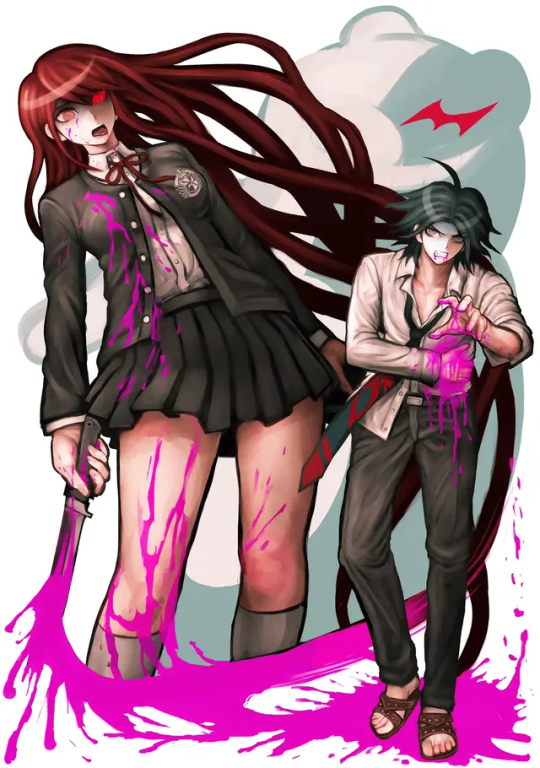
He dies believing Junko never actually loved him. He becomes thoroughly convinced that she was pretending, and that Ryoko was nothing more than a part of the game to send him into Despair. And that perception of Junko combined with her causing his death brings Junko an indescribable Despair. The man she loved died by her hands, hating her existence. Truly, this was Despair!
"'I was right, wasn't I? About you remembering? That's why you can't remember me? You remembered that I wasn’t a particularly important person to you…so that's why you can't remember?' Kamukura then revealed his eyes, their glint was tainted with deadly hatred. '…You're such a bitch.'" -Yasuke Matsuda, DR 0
"'There's no way this would have nothing to do with me…' There was a hint of sadness laid somewhere in that murmuring voice. 'After all…you were the most important person to me of all…' Those were her true feelings. Yasuke Matsuda was an especially important existence for Junko Enoshima." -Junko Enoshima, DR 0
She loved Yasuke intensely. She cared about him moreso than anyone else, save Mukuro. And yet, despite how attached he was to her, Yasuke couldn't realize in his own Despair that there'd be no reason for someone like Junko to bother dragging herself through so much mental torment and manipulation at his expense if she wouldn't get a magnificent Despair out of it. Yes, she causes Despair for others, but she doesn't throw herself directly into the fray unless she gets something out of it. Despite loving her, he never actually understood her. That truth, too, would bring her Despair.
Part 9- How Junko Shaped the Game
Turning back towards THH, Junko's reveal shakes the class. Most of them believed that finding the mastermind and forcing them to show their face would end the game. But that's not the case for Junko Enoshima. She's not through with them yet, and takes the opportunity to rub everything they've lost in their faces.
"Puhuhuhu... Did you really think the story would end once we reached the climax of the case? Wrong! There's still plenty more to go!" -Monokuma, THH
Throughout all of THH, Junko's plan is hinged on Despair, and thus, she takes her class, which had become close friends and confidants over the past two years of their lives, and attacks what would bring them the worst Despairs possible for each. Her talents as SHSL Analyst allowed her to analyze her own classmates and tear at what would've made their 16-to-20 year old selves when they first met snap. And each one of the motives she used was designed specifically for that, something she makes sure to cite when taunting them ("Did you notice that each motive I presented you had a specific theme to it?")
The first motive's theme was 'human connections', and everything surrounding the first chapter reflects this. Sayaka's motive wasn't just about her career. It was about the family she'd found and not letting down the people who loved her. And on a meta perspective, the first chapter was also about relationships, specifically that between Sayaka and Makoto and how that relationship's end motivated Makoto to eventually become SHSL Hope, and to a lesser degree, starting the development of the critical relationship between Hina and Sakura.
The second motive's theme was 'the past', something the 2nd chapter very much reflects. The secrets that Junko uses against the class are extremely personal to each of their histories, and can be used to twist each of them to head towards Despair, whether that be through their own hand or their own poor judgements of the people around them from their lack of memories. Mondo's secret isn't just tragic; Junko purposefully warps it in his letter to affirm his own belief that Daiya's death was murder and not just an accident, and because no one knows its contents, it sends him into a spiral. The same can be said for Chihiro, whose secret implies that their gender presentation is a lie, forcing them into a conformatory decision that leads to tragedy. Her classmates' memories of the past are presented in a warped way to suit Junko's needs. Toko's secret of having DID and a serial killer alter, Genocider Syo, is also revealed and used to develop her more as a character when she's the one most afraid of opening up to the class.
The third motive's theme is 'greed', using the promise of wealth to lure Celeste to murder. Even if you could argue other characters within the class could have fallen victim to the first two motives, this one is undoubtedly meant to target the Yasuhiros on Junko's part, as realistically, no one else in their class has any reason to even consider killing for money by itself, especially not when there's already been two class trials. The Yasuhiros are the only ones who consider themselves to be in any level of financial need. This theme is also meta-reflected by the possessive nature Kiyondo and Hifumi both develop over Alter Ego. Because neither of them can keep themselves away from them, they became easily manipulated, and it became harder for the rest of the class to obtain information and watch out for each other, forming a tunnel vision towards Alter Ego in their minds. This contrasts Celeste and Hiro greatly as well- Celeste is consumed by her own greed, while Hiro doesn't even consider killing for the money, opting instead to try and look out for the class and develop him as a survivor. Hiro's the one that looks out for Taka and calls out Hifumi on his obsession; Hiro's lured into Celeste's trap by promise of a way to save everyone, while Celeste rejects her class in favor of fighting for a selfish dream she didn't even need.
The 4th motive is that of 'betrayal', and this one is where the cracks in Junko's plan finally reveal themselves. Each and every trial before this one ended in tears and Despair, and a sense of hopelessness that wasn't alleviated until they were given new distractions. Sakura's betrayal is meant to mirror Junko's own betrayal of her classmates, and when half the class instantly turns on her, things go exactly as Junko plans. Sakura swears to destroy Junko by any means necessary, and takes her own life in an attempt to take the fun from Junko. With Monokuma's meddling, Hina is instead pushed into attempting a murder-suicide, one she's caught for by Kyoko and Makoto. But once the truth comes out, Sakura and Hina aren't condemned. Those that attacked her end up defending her. Sakura doesn't betray her class; Sakura betrays Junko, and it puts her on the path to failure. Junko even admits to this, though indirectly: "Once I revealed Sakura's betrayal, that led to everything that came afterwards..." Note this is the only time where she doesn't expressly explain to the survivors why her motive was successful, because in this instance, it wasn't. It also fills out Hina as a character and uses her arc of an attempted self-destruction to contrast Junko, as Hina let herself be forgiven by her classmates, something Junko could never let herself do.
Part 10- Self-Destruction (Junko vs Sakura)
Despite the fact that Makoto is the character christened as SHSL Hope at the end of THH, there are a lot more parallels between Junko's self-destructive nature and Sakura's self-sacrifice that often go unnoticed, and these parallels are quintessential to the overarching narrative of THH and why Junko functioned as its villain.
Both Sakura and Junko do the things they do because they love the people around them. Both Sakura and Junko find themselves to fall short of who they'd rather be. Both Sakura and Junko kill themselves. But their goals are fundamentally, diametrically opposed.
Sakura Ogami, as a martial artist, is a woman of honor and principles. She believes in the inherent worth of the people around her because of this, and strives to become the strongest person alive not because it's a desire of her own, but because that's the destination the people who loved her had in mind for her(her father, Kenshiro, etc). And therefore, she's someone who fundamentally wishes to act in the best interests of the people she loves, even when it's at her own detriment.
Junko Enoshima, as a hyperintelligent analyst, is able to predict anything. And because she can predict anything, she can enjoy nothing, because she always knows what will happen before it gets there. Ergo, the only way she can enjoy herself is via the only thing that can make her feel- Despair. Grief and pain still feel like something in a world where she can't be pleasantly surprised by anything. She despises herself for it, and so in order to feel, she decimates anything that brings her joy. Joy is boring; joy is nothing; joy is just part of the default setting because she still sees it coming. And therefore, she's someone who fundamentally acts in the worst interests of those she loves, for the sake of her own detriment.
When Sakura kills herself, and Hina is filled with Despair, Junko wants to revel in the Despair this brings everyone else. Sakura killed herself for people that weren't giving her the time of day, and the one person who gave a crap tried to kill you all! Isn't it so tragic, so Despair-inducing, don't you just want to break down and crumble?! And then they don't. Instead, after hearing the truth of Sakura's actions, the entire rest of the class is uplifted and united by her honor. Even Byakuya is feeling hopeful now! What the actual fuck is happening?! Is this how they'll feel when I die, too? Will my death bring no Despair?
8.2- Class 78-B
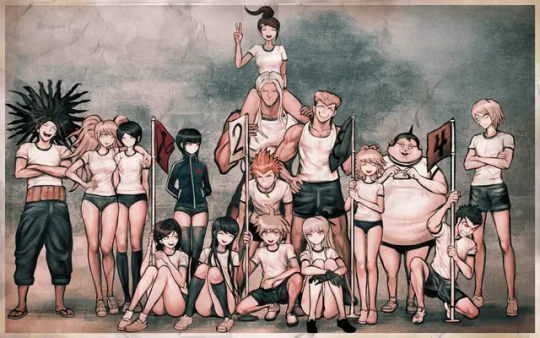
We never get to actually see any of her classmates interacting directly with her in their school days, or in any way that was positive. Outside of THH's and SDR2's final trials, we as an audience don't get to see them interact as friends. So we have to draw these conclusions from what little context we were given within her dialogue in these few rare moments in THH and the mentions of her class in DR 0.
"There was a tap inside [Junko's] skull, like someone pressed a switch and slowly her entire brain lit up with a notion. Several faces appeared. Of course, they were faces she knew… they were the faces of her Hope’s Peak Academy classmates." -DR 0
Without any doubt, Junko loved her classmates. They were people she considered in high regard and had unwittingly fallen for their unique charms. While Junko had come to Hope's Peak with the intention of causing Despair, she'd accidentally found people that made her happy. When entering the school, she intended to use the people around her to damage the school of Hope's reputation, but inadvertently became attached: "Once your school life here began, I thought about you constantly. It's only natural that I would... fall in love." This made for a fantastic happy accident for Junko, as finding something beloved made for a much more fantastic Despair for her later.
"Remembering the faces of the people who would bring her such despair, she felt something that was similar to a person in love, and she danced to the rhythm of Despair. 'This is it! This is a fantastic despair!'" -Junko Enoshima, DR 0
We can also reasonably assume Junko was someone her classmates had considered dear to them in turn, as she not only knew how to motivate their past selves into murder, but also their deepest secrets and fears, and was able to attack their relationships when they themselves couldn't even remember them. Could you handwave that level of connection with her SHSL Analyst talent? Actually, no, because as stated previously, analysis requires data. And the only way she could gather enough data to understand them at a depth that let her plan her killing game to perfection was by getting to know them firsthand.
There's also a strange implication within Junko's explanation of how she put the killing game together that I think gets often overlooked. When she prepares to infodump to the remaining survivors, she says this:
"So since I love you guys so much, I'll tell you all about it! All about the idea we came up with as the Ultimate Despair- our plan to bring Despair to all mankind!"
It's an interesting choice of pronoun, to say the least. "We." It implies that the group she's referring to when she speaks is herself and the people she's speaking to at this moment in time. Could she just be switching gears and talking about Mukuro, and later, the RoD, Kamakura, the WoH, etc? Yeah, absolutely. But none of these characters had even been mentioned, whereas she was just speaking on her love for her classmates in the dialogue prior and continues to talk about her classmates after.
In listening to Junko's explanation of how she put the killing game together, it made me come to a pretty disturbing realization. One of the biggest things about Junko is how she's always able to seemingly pull together everything to form this killing game almost entirely by herself. Later installments to the series include some level of explanations- Towa Group becoming a financial and robotic sponsor, a SHSL Mechanic that could've made the executions, etc- but her success within the killing game hinges fully on her knowing how to best bring her classmates to Despair. And she's not just an analyst; Junko is a master manipulator. Throughout her entire explanation of how she created the killing game, she never says she threw them into the killing game against their will. Instead, she very deliberately calls attention to her classmates' choice in the matter, over and over again. They chose to enter the shelter, they chose to lock the doors and cover the windows, they chose to be there with the SHSL Despair, though they didn't know who they were with at the time. Makoto is the one to assert that they did so because they believed in the hope of survivng, and giving the world a fresh start. But it's not just their year's worth of fun school classes missing from their memories. There's also a year of hopelessness within the school erased, too. Combine this with a few well-placed lines from Junko.
"You see, by taking away your memories, I gave you hope."
"You absorbed all that Despair, but then you forgot it all."
"Despair is contagious, you know. It's almost like... a natural phenomenon."
"Once you'd finished building your little shelter, it was time for me and Mukuro to get to work. And thus began the killing game!"
If Junko is making the claim that she was able to give them hope by removing their memories, that meant none of them had any to begin with. She emphasizes how much Despair her classmates absorbed, and even Kyoko herself states that it's impossible for all this to have been put together by just the Despair Sisters. If an additional year of hopelessness waiting around within the school were also erased, and Junko is intentionally avoiding saying she started the killing game herself, is it beyond reason to suggest that at least some of the 78th class had fallen to Despair in that timeframe? Look at the survivors that are left- Byakuya, Toko, Syo, Hina, Hiro. All characters that Do Not Like each other by this point. Most of the meaningful connections between the classmates have been murdered. Their past is scrubbed away. They've basically all betrayed each other at least once by now, and have been pushed to the brink of Despair. If you got a collection of THH characters most likely to fall to Despair, it'd be this group.
Junko even takes a point to emphasize just how Despair-inducing the truth can become, targeting Kyoko directly with this. As Kyoko comes to the realization the Junko purposefully designed the game with the possibility of being caught, she revels in Kyoko's Despair. She taunts her with the fact that their solving the mystery only made things worse. She is purposefully trying to drive the rest of her surviving classmates into SHSL Despair alongside her. She's manipulated the game and her classmates to get what she wants- the people she loves slaughtered, the survivors joining her in Despair, the world reborn by her hands. She quite likely manipulated her classmates into plotting each other's deaths not only inside the game, but in preparation for it as well.

Out of all her classmates, there was only really one you could argue wasn't perfectly analyzed and manipulated. One stood out among the rest as the unknown variable- a concept otherwise foreign to Junko- that was able to act as a wrench in her plans. And this, too, could cause her Despair.
8.3- Makoto Naegi (Hope vs Despair)

Makoto Naegi's SHSL Luck, AKA SHSL Hope, is the one who takes down Junko Enoshima's SHSL Despair. But why and how was this possible, and what does that mean for the relationship that he and Junko had prior to the game? If I wanted to fully delve into their relationship specifically, I'd need to really tear into Makoto's character, and I don't really have the time for that today(again, still hoping to get this out before 2025), so we'll just do the best we can based off the scenes they've had together and what we know about Junko to put the pieces together thematically.
Makoto is an average guy in just about every sense of the word. He likes average things, he looks plain, he's chosen randomly by lottery instead of earning his place in the school, he doesn't have any noticeable traits or beliefs- at least, not at first.
"But you know, if I had any one kind of strong point, so to speak, I'd say I'm a little more gung-ho than other people." -Makoto Naegi, THH prologue
By his own admission, he has a grand total of two character traits- abnormal normalcy, and enthusiasm. He's optimistic, and that's kind of it. By all intents and purposes, he's the SHSL Joe Schmoe, and that should make him another blank canvas on the wall of pawns Junko can knock over whenever she gets a little bored. And yet, SHSL Joe Schmoe is the one directly responsible for Junko's failure, and the one person who, by her own admission, she cannot predict. So why and how exactly is that?
I recall reading a story about a coding competition, where coders were meant to design an AI for a gambling competition. One entry proceeded to make an AI that would go all in every single time it was its turn, and the simplicity of it was so intimidating that it broke every other AI that was in the competition. That mentality is the exact strategy Makoto unintentionally employs. He doesn't have any strong sense of self or moral complexities; he's a dude that exists, and he throws everything he is into everything he does. He's an optimist to the highest possible sense. He leaves his door unlocked even after 4 murder cases and a break-in. He refuses to fathom anything but the best possible outcome, and so he's able to combat Junko's total Despair with pure hope. Makoto's head is so completely simple and empty that it acts as the exact opposite to Junko's highly intelligent, analytical mind. When she tries to force-feed him Despair in the final trial, he hits her with the power of 'nuh-uh,' and it works. It's that emptiness that fascinates Junko, and makes him and his random chance luck unpredictable to her.
Part 11- "Defeating" Despair
When Junko loses, it's not just because she failed to convince the others of Despair, or that Makoto's hope was just naturally the stronger conviction of the two. Rather, Junko's loss can be attributed to her own conscious choice to lose. Even if we're looking solely at THH, this is the case. And the source is found in a single line.

If her conviction to win in this moment was absolute to the point where only one person had to vote for Despair, she just had to include herself in the votes. After all, she is one of the 16 students participating, and by all accounts, she should receive a vote for this trial. But she casually refuses, instead leaving it in the hands of the survivors to make the final call. And that in and of itself is indicative of Junko's desires. When faced with a situation she can easily control, she leaves it to fate to decide, allowing that glimmer of unpredictability to take over and surprise her. She'll always believe in the Despair she's dedicated herself to; it doesn't actually matter who wins here. What matters is that she feels Despair. Either Makoto succeeds in convincing his classmates of hope and kills her, ruining all her plans, or he fails, and she exterminates the one unpredictable person in her life and locks herself out of that rush of adrenaline for the rest of her life. Either ending would fill her with Despair, and in that sense, there is no way for her to lose. She won the killing game, whether the survivors realized it or not, because she succeeded in destroying herself. She built herself a Saw trap, and her loved ones set it off.
Part 12- Execution Analysis
Junko is the only character to walk willingly into her execution, even being the one to hit the red button to start up the punishment rather than having Monokuma do it. You can first attribute this to her no longer being in the control room to pilot Monokuma to do so, which is true, but it's also representative of her desire for self-inflicted Despair. Her eyes are swirling with Despair and she goes on about how good it feels, how everyone should die in such Despair, how this punishment is 'extra special', because it's one she brought on herself. After methodically destroying the most important relationships of her life one by one, she'd now be killed by her friends in a series of recycled contraptions in an 'Ultimate Punishment'.
As she goes through each step of the execution, we see her bearing a wide grin, flying through the machinery that'd killed every one of her executed friends over and over again. She hits every baseball, handles the Cage of Death with ease, calmly survives the firetruck, and bobs her head with the excavator. She doesn't struggle, not once, and this is because in prolonging her Despair, her SHSL Analyst talent is keeping her alive. She's watched every one of these executions, and thus, knows how to survive them all. It's not just a retrospect of every prior execution as a callback for the audience; it means something. With a punishment meant to bring the character's worst ironic death via their most hated parts of themselves, then of course Junko's analytic abilities are keeping her alive through everyone else's Despair.
The execution ends with the return of the After-School Lesson, and this is the one that finally kills her, because it's the only one in which she doesn't know how it ends. Makoto's execution was tampered with by Alter Ego, so there's no way to know if she'll actually die or not. Junko can't know if it still works or not. Junko doesn't know whether she'll live or die, and that's what makes it so exciting. She's driven to the edge of death and left to sit there for a moment too long, long enough for the Despair to be replaced with disappointment- only to kill her right when her Despair abandons her. She stops smiling, looks up at the press, and dies abruptly. In her final moments, she is denied her Despair. Makoto did win, after all.
Part 13- Answering the 'How' (SDR2)
One of the biggest 'what-the-fuck's people tend to have after walking out of their first playthrough or watchthrough of THH is the How of the entire game. The first game is good and all, but it leaves Junko's skills and how she set up and pulled the killing game together pretty vague. This is intentional, as in the first game, she exists as a kind of force of nature, representing Despair as an inherent part of life in the same way Makoto represents hope. But after Spike Chunsoft commissioned a sequel, and Kodaka set to work on DR 0, the question of 'how' had to be answered as the series was expanded upon. This started with the introduction of Yasuke Matsuda's memory erasure technology and the reveal of Junko's SHSL Analyst status in DR 0, but continued to expand well beyond that.
In SDR2, we're introduced to an entirely new cast of characters, all with new and less conventional talents in comparison to the first cast. Whereas THH had plenty of more mentally-oriented talents like programming, writing, and hall monitor to balance out their more eclectic ones, the SDR2 cast is almost entirely physical or social talents like a yakuza, animal breeder, and mechanic. These talents also put them into more social or powerful positions than the 78th class on an overall skill, as you find yourself full of people that could command full armies and people proficient with making weaponry or fighting and potentially killing the people around them. This differentiates the casts, and automatically makes them more threatening in the ways they could attack each other in a killing game. This also makes them Junko's perfect weapons.
8.4- Remnants of Despair
Class 77 is revealed by the end of SDR2 to be the Remnants of Despair, pawns swayed over to SHSL Despair by unknown means. Makoto refers to this conversion as 'brainwashing', though whether this is him literally knowing they were brainwashed or making an inference and later being proven right is unclear. Regardless, the RoD are part of the SHSL Despair movement, and exist to explain a lot of how Junko was able to not only set up the killing game mechanically, but continue to end the world and send it into ongoing war after the initial Incident.
This is something especially apparent with the remaining surviving cast, as they're the most immediately powerful amongst the cast for Junko to use. Sonia and Fuyuhiko are both in direct command of massive amounts of people, with Sonia being the heiress to an entire country and Fuyuhiko being the leader of the largest mafia in Japan. Kazuichi as the SHSL Mechanic explains how and why so many elaborate executions were able to be designed ahead of time for the killing game, and Akane is a wicked fast athlete who's already accustomed to tragedies and will eat anything. On top of all this, there's Hajime, a human experiment worked on by those in league with the values of hope, and that was forcefully imbued with every talent that's ever been documented, including Junko's.
This sums up everything that made the RoD useful, but doesn't explain how any sort of meaningful connection was established between them and Junko. That's because on the overall, there isn't one. With two notable exceptions, the SDR2 class is largely unimportant to Junko emotionally speaking. They're useful, and that's about it. They weren't in the same class; they didn't interact at school or bond in any important way. She just dragged them down with the bare minimum brainwashing video because of their usefulness.
We also know Junko didn't care because of just how differently she speaks to and treats class 77 as opposed to the characters that we know she does love. The series painstakingly makes sure you know that Junko tears up everything she loves- Mukuro, Yasuke, class 78. She gores through them because hurting the ones she loves hurts her right back, and gives her an excellent Despair. But with class 77? Beyond the initial conversion, she doesn't really touch them. She doesn't need to waste her time with people who are virtually strangers. Their pain just is Despair; it's not her Despair. It's good for a laugh, but not much else, so she lets them run rampant on their own.
On an overall scale, Junko didn't give a fuck about these people. They existed solely as tools to her, and she interacted with them as little as possible. Unlike with her classmates, whom she loved, she did the absolute bare minimum required to get them to feel Despair by showing them a video and letting them do their own thing. The RoD were Remnants and not full-fledged SHSL Despair because their Despair was artificial. It was inauthentic, and so they could never ascend to true Despair in the way characters like Mukuro, Junko, or Monaca can.
8.5- Mikan Tsumiki (The Relevance of Junkan)
When we're first introduced to the concept of Junkan, it's portrayed as a one-sided infatuation from Mikan's perspective. She tells her classmates about the one person who forgave her existence and loved her anyway, with the choice of language emphasizing her beloved's need for Despair and asking for forgiveness for hoping suggesting that this beloved is Junko.
"Ahhh, this feeling of freedom where you no longer care about anything! My beloved and I are the only ones within that thin veil, and I'm just looking out through it..." -Mikan Tsumuki, SDR2
Whether intended at the time of SDR2's release or not, this line of dialogue ended up foreshadowing Mikan's heightened importance in comparison with the rest of her class to Junko as an RoD. When everyone else were just tools, remnants formed by brainwashing, Mikan is ultimately differentiated as special, not necessarily craving Despair but happily parroting it for the sake of a twisted love.
"It's like nothing matters! I could just die, that's how little it matters! Who cares about hope or despair! It's love, only love!" -Mikan Tsumiki, SDR2
This 'beloved' being Junko is proved true when AI Junko emerges in the final trial and reveals that class 77 are also the RoD. At this point, though, there's almost no evidence that Junko feels anything back for Mikan besides a vague sense of usefulness shared with the rest of her classmates, as she mimes seeing them as friends because of their actions as Remnants of Despair.
Something that's important to remember, however, is that Junko's need for Despair drives her to destroy everything she loves. We've seen this multiple times, over and over again with Mukuro, Yasuke, and her classmates before now. The reason we know she didn't care about class 77 is because there are no such personal attacks to tear them apart and make them despise her specifically- their pain brings her no Despair. There's no evidence of a personal attachment. Once DR3 comes into focus, though, that changes for one RoD in particular- one Mikan Tsumiki.
DR3 made the decision to bring Chiaki back as a human character, and made her the central figure for class 77's bond. Junko dragging out Chiaki's suffering and forcing her classmates to watch became the titular event that drove the rest of class 77 to Despair. But there was no personal attachment to this act, because she'd only just met Chiaki, and there was no dynamic to speak of between the two of them besides maybe a vague sense of interest based off of their single interaction.
So, if there's no established rivalry or connection to Chiaki, why does Junko single her out and kill her specifically? Easy; Junko doesn't. She sets up the maze, sure, but she is not and never was the one targeting Chiaki specifically. That was Mikan, and the show makes sure the audience sees this more than once.
When Mikan and Junko meet, it's because of a chance interaction. Mikan runs into Mukuro by mistake when going to check on Ryota, and is captured. In this sense, she's literally presented as a gift to Junko. Junko learns she's a nurse, and decides she'll let her hang around while she works on the brainwashing video.
In their next scene together, Junko is having Mikan massage her leg, listening as Mikan presents her classmates and friends to Junko. She's the one who tells Junko of how close her class has become, and how Chiaki is the central figure behind their bond. It's where we get this from Junko:
youtube
Though you might not immediately know it, it's swiftly revealed to us that Mikan is now in love with Junko via this and Ryota's mention that something appears 'off' with Mikan. From Ryota's discovery of the prototype video that was used on the Reserve Course students being immediately followed by Mikan's appearance and saying he souldn't have watched the video, it's easy to fall into the assumption that Mikan's fall is purely because of the brainwashing. But that's not necessarily true. Mikan having seen the video prototype is very different from being brainwashed entirely, and considering Junko herself says that the video is insufficient and that she can't brainwash people like Ryota can, there's an inference to be made that while the prototype video may have helped, it didn't rob Mikan of her free will in the way Chiaki's death did for everyone else. Ryota didn't fall into Despair from the video by itself, and neither did Chisa Yukizome. We also know from her FTEs in SDR2 that even before falling to Despair, Mikan was already a little fucked up, as her idea of a good time includes telling you all the ways in which you could die and begging people to treat her like garbage just for a taste of acknowledgement.
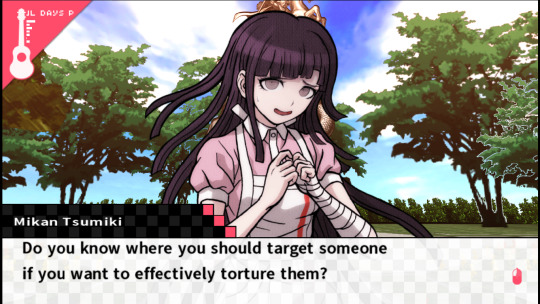
We also see what motivated her to nurse not only herself, but others as well- not empathy, but power and control.
"Sick people and injured people... are weaker than me. .... But if I know the proper way to treat them, that means my words are absolute. Which means... They'll need me. They'll depend on me completely." -Mikan Tsumiki, SDR2
Again, all this can be found in her FTEs, in a situation in which she's mentally reverted to the way she was entering the school, before she and Junko were so much as in the same city. By this line of information, it's just as believable that her falling in love with Junko was because Junko and her video actually connected with Mikan, taking Mikan's craving for attention via mistreatment and using it to her advantage. It's also worth noting that the anime makes a point to use 'spiral eyes' to demonstrate when a character has been brainwashed. This is something used with Chisa, with the characters in the Future Arc, and when the RoD are shown Chiaki's murder. But Mikan does not have these spiral eyes in the scene where she nearly assaults Ryota. She's horny, and it's extremely disconcerting, but her eyes are still her own, suggesting that the video didn't take a hold on her the way it did for the Reserve Course students.
youtube
Mikan is also one of the most similar characters to Junko in that she craves pain. Not emotional Despair in the way that Junko does, but physical pain, not only from Junko, but from just about anyone. Pain means attention, and that's something she needs more than anything. By this metric, she and Junko are actually quite similar, needing the worst from the people they love, and this makes for a formula that can create an incredibly abusive relationship. Junko can do literally anything to Mikan, and she'll lap it up like a dog. Mikan makes for a perfect punching bag, and suddenly, their relationship is intentionally paralleling the way Junko treats her sister. She kicks her around, calls her a disgusting horny piglet, and Mikan thanks her for it. It becomes a challenge of seeing how far she can push Mikan before she snaps and attacks her back, just like how she tries and fails to do with Mukuro. Simply put, there's no reason for her to treat Mikan in this way if she doesn't care about her as a person, romantic or otherwise.


This connection Junko forms with Mikan also serves to answer that earlier question: why did she bother with a class full of people she's never met? It's because of Mikan. Mikan is the one to present class 77 to her, and with the context that she goes on to set up a murder maze specially for Chiaki, and specifically says that Mikan has 'made a compelling case', that means Mikan was asking her to make them SHSL Despair. And not only does she do so, she does so in a way that forces Mikan to be the one to lead them into the trap. She brings her classmates to the bunker, she separates Chiaki from the group, she's responsible for sending her loved ones to Despair. This isn't a plot that's personal to Junko; it's a plot that's personal to Mikan, and Junko helping drive Mikan's loved ones into Despair saddles Mikan with a Despairing guilt tied to Junko.
youtube
Driving class 77 to become RoD is an act of love for Mikan- a twisted, abusive love, but a love nonetheless, and one that's in line with the way she drives her own class to Despair and makes herself the crux. Should her classmates realize what's happened, they'll know that Mikan brought them here. The rest of class 77 are Remnants, but Mikan is a SHSL Despair like Mukuro, valued like Mukuro, and her being the one to regain her memories and turn on all her friends once more, betray them once more, is a remnant of Junko's love.
8.6- Izuru Kamukura
When Junko first approaches Kamukura, she does so with the intention of offing him then and there. He's the artificial SHSL Hope, lab-grown by Hope's Peak Academy, and represents everything their research stands for. To kill him would be to kill their work, and that's what she walks in with the intention of doing.
Naturally, she fails, as Izuru's been imbued with every talent known to man. This wasn't outside to realm of possibility for Junko, though. There were several different ways to kill the SHSL Hope invented by Hope's Peak. Whether or not she killed him literally or metaphorically wasn't the point.
youtube
Izuru Kamukura exists as an empty symbol. He's filled with talent and nothing to use it on. Because his existence is an artificial one, he has no passion with which his talents were born, and no drive to use them. If anything, he's not the SHSL Hope, he's the SHSL Talent, but regardless, his creators have labeled him their SHSL Hope so that he can become their puppet-symbol. So to kill the SHSL Hope the trustees have created, all Junko really has to do is get her hands on the puppet first.
The actual convincing of him isn't really what matters to Junko. Similar to the trustees, she also sees Kamukura as a symbol, albeit one to be knocked down instead of bolstering up, so she uses him like a token symbol, too. All she has to do is pique his interest, just enough to get him to follow her, and her job is done. She talks on about her love of Despair, how grief and pain are something that actually makes you feel, and because he's had his emotion removed, that unknown variable is enough to get him to watch, just in case.

Despite his having every known talent, Kamukura is tricked. He's framed by Junko as being responsible for the murders of the student council. And in addition, he sees the power of Despair, as adrenaline from the final survivor pushes him to attack Kamukura even when it should've been physically impossible. When moved by that animalistic need to survive, he manages to cut Kamukura's face even after getting his own sawed in half. Thus the SHSL "Hope" is introduced to the world as creating Despair, and his job is complete.
Junko doesn't really bother with Kamukura after this framing. She lets him hang around, but when he decides to leave, she doesn't make any sort of fuss or try to attack him anymore, because she doesn't really care about him. He was only as important to her as his title was to the school, and once that title was tarnished, any connection between them she pretended to have was dropped. The next time these characters meet, it will no longer be the real Despairing Junko tainting some artificial husk of a person, filled with talent and emptied of heart, but rather, an artificial Despair combatting a survivor's true identity.
Part 14- The Brainwashing

Okay, let's talk about this. Was the brainwashing a good move for the story? Was it actually planned from sdr2? Or was it something half-assed at the last second because Kodaka didn't think that far ahead? Well, imo, it was almost definitely intended from their conception, and is very reflective of Junko's own motivations and goals.
From as early as DR 0, brainwashing tactics are evident within Junko's work. When Ryoko meets the reseve course's underground cult, she finds them watching a single video of mutual killing over and over again, with a fixation on its contents that's unnatural.
"[The cultists] didn‘t even bother to glance at me. Their eyes were still plastered to the monitors in front of them. .... Every monitor was a pitch black, none had a single image projecting on it.
'It‘ll… start again soon… so…' the monobear heads sitting in front of me said in monotone." -DR 0
Brainwashing is again brought up within SDR2, as not only is Hajime expressly a human experiment due to alteration of the brain specifically, but the entire class is referred to by Makoto as 'brainwashed'. At this point in the series, there's no reason for him to actually know this short of Kamukura possibly telling him they were brainwashed, so we can reasonably assume this statement is rooted in Makoto's inability to understand Despair and seeing anyone's craving of it as a mental disease that can be cured(not an unreasonable conclusion to reach, considering the Everything About Junko he was led to witness). Ergo, it's not beyond reason to assume that brainwashing was well within the bounds of possibility for the characters even at that time.
While the idea of brainwashing the class into Despair appears to rob the class of their moral complexities that came from being RoD, the view we as an audience are given by Makoto, Kyoko, and Byakuya within SDR2 is only ever that the RoD were victims of Despair. The survivors are already established as more reliable narrators than AI Junko thanks to the first game, so there's no reason not to trust that what they say is likely true. In addition, Junko never actually directly states that they did it of their own free will, just that they were on the same side and tries to get them not to listen to Makoto, her already-established opposite.
The idea of class 77 being brainwashed went from theory to canon in DR3, and while the method of their brainwashing is controversial(the line 'cutting through their free will like swiss cheese' from the dub is pretty aggravating), it still lines up with Junko's pre-established goals and motivations. She goes to Hope's Peak to tear down Hope and replace it with Despair, and after being shown a class full of Hope united by their love for the same person, she exploits it and is able to use their love against them to create Despair as an outsider. She's introduced to the class, uses them, and then lets them all go do their own Despairing thing because she doesn't actually care what they do. What matters most is her own Despair, and tearing hope to pieces. So her interaction with class 77 remains minimal, a mere experiment for Despair in the same way Hajime was an experiment for hope, and then keeps going about her business, calling on them presumably only if she needs something like the execution contraptions.
14.1- The Despair Videos & Knowing the Difference
There's not just 1 Despair video. Over the course of the anime, we're introduced to three, and each one has different levels of effect on those who watch it. Knowing the difference between these three videos is quintessential when talking about the brainwashing and how each character to watch a video is affected, as well as understanding different characters' roles in the narrative as they pertain to the videos. So let's establish the differences between these 3 videos and their effectiveness before we move forward.
14.1.1- The Student Council Massacre
The first Despair video, aka "the prototype", aka the Mutual Killing Video, is the one created using the footage of the student council's beta mutual killing game. This is the one made solely by Junko's attempted mimicry of Mitarai's animation talents, taking security footage of the mutual killing and sharing it with the Reserve Course and Mikan as a test run. And while it does have some level of effect on them, inspiring 'the parade' and having a hand in Mikan falling for Junko, it doesn't work nearly well enough to actually rewire their brains for Despair or strip them of their hope in the way that Junko would like. Even in the context of a parade, it's still very much a protest in the hopes of change. There's still the demands of a refund, of being let into the main course. Even when shown the Despair of the truth, there is still hope that things can be changed or fixed. And that's not what Junko wants. The only character that we've seen to watch this video to end with the aforementioned 'spiral eye' telltale of true brainwashing is Chisa, who we know was also being actively lobotomized by Mukuro during a repeated viewing to force it to work. This instruction came from some manual Mukuro was left with, presumably written by either Junko or Ryota.
While this video is what starts the parade, what eventually pushes the parade to violence isn't Junko. It's the inaction of Hope's Peak Academy and refusal to acknowledge their mistakes. Instead of coming clean, they bury everything wrong they've done even further and have their security beat the shit out of anyone that tries to find answers for themselves, doing so in the name of 'protecting them' from information. They keep the wrongdoings of their 'real' students under wraps at the expense of their underlings, fully buying into a talent-based hierarchy they created. Those without special talents are sources of finance- nothing more, nothing less. And when that overwhelming majority questions that, and finds evidence that HPA doesn't care, of course they'll retaliate. The video itself isn't a brainwasher, but when combined with the very real negative effects of the classism which the Reserve Course students find themselves hurt by, it makes its influence that much stronger.
14.1.2- Human Chiaki's Death
The second Despair video is Chiaki's execution, and is a live recording shown to her classmates. As far as we've ever seen, this is the only instance in which this is ever shown. This live recording is enough to send class 77 into Despair properly, spiral eyes and all, but there's an underlying implication that the primary reason for this is because of how important Chiaki specifically was to them. Throughout the season, and especially in this episode, Chiaki is established as the glue that holds the class together. Despite not being an extremely sociable person, she connected to her class with her love of games, and her earnest love of it endeared her to them, and their love of her did vice versa. The footage locked them each into place, unable to look away, and once they were at their lowest, at the very end of the video, Junko swoops in to dub them all Remnants and decides for them that they will now cause Despair for her. And because she says this when the live footage has brought them to their lowest, they each fall into this trap, at least to some extent. Whether or not they truly belive in what they're doing, they do it, because that feeling of Despair is their last connection to Chiaki left.
But, similarly to the prototype, it's still ultimately insufficient. Granted, it's much more effective than the prototype, but it isn't a full mindwipe, either. We know this because when we meet Nagito Komaeda in UDG as the Servant, he's still himself. He still has some level of self-control, able to speak and act as an individual even when following the orders of Monaca or the other WoH. He says himself that he despises Junko more than anyone else in the world, and follows through with Despair with the faith that it'll inspire a newer hope to conquer it. He says something similar in that moment of brainwashing as well.
"Nanami is our hope. Look what she did to her. What Despair... What a horrific sight! This is... This is the Despair we must overcome? Ah, Nanami... You understand, right? At this moment, you are becoming a stepping stone to hope!" -Nagito Komaeda, DR3
You could possibly attribute this to Nagito's luck cycle and history with tragedy just making him have a higher resistance to the brainwashing, and honestly, there's no strong way to contradict that, since Nagito and Mikan are the only ones we ever see in Despair outside of a montage, but narratively, I doubt they'd make a point to show one of the RoD hating Junko if it weren't to make the point that they had agency. Nagito was just the fan favorite, so of course it was gonna be him. You saw the fanservice in UDG.
14.1.3- Mitarai's Animation
The third and true Despair video is the inversed Monokuma Theatre, which is used to mentally hack its viewer and drive them into such a strong state of Despair that they kill themselves right then and there. This is objectively the strongest of the Despair videos, and the most effective, with the only character it doesn't immediately convince to kill themselves being the Future Foundation chairman Kazuo Tengan. This is mostly for plot reasons, but I'll address this specific exception to the rule later on and why this was the case.
The Monokuma Theatre video is mass-emailed to the Reserve Course students after they destroy the shiny new building their parents were tricked into paying for. The video hacks their minds when in an already vulnerable state, and each and every one of them jumps out of the building and kills themselves. Just as quickly as they take some control and uproot the system that hurt them so, they fall victim to the games of another who never cared for them in the first place. The purpose of the video was to create a horde of faceless victims to spurn others into action, and it worked like a charm, spiraling the world into a state of Despair. The RoD used their influence to ensure a smooth transition into this state of worldwide chaos as well, having significantly more social power and reach to spur more and more people into the fray.
The Monokuma Theatre video is also what makes the members of the Future Foundation kill themselves in the Future Arc, hacking their minds and then dropping a knife with which to stab themselves with. It works on every character that watches it- Chisa, Gozu, Seiko, Ruruka, and Makoto. Each of these characters are in various mental states when they watch it, yet all of them fall to it, without exception. It doesn't matter who you are or what you believe in. If there's even one thing you regret in your life, the video can and will work on you. It just does. And by that logic, it's the only real 'brainwashing' video, because it can work on anyone who watches it. The one character who seems to withstand it is the one who builds an entire killing game using said video just to force its creator to action, and doesn't even seem so much as affected by it. Really, it calls into question whether or not he was even affected by it.
14.1.4- The Flashback Light (Bonus Brainwashing!)
The Flashback Lights are used solely in V3, and are invented by the mysterious Team DR to reprogram the memories of their victims to play along in their scripted killing game. We see this work on both Kaede and Shuichi, as well as see the aftereffects it has on the rest of the class.
We learn while investigating that Tsumugi is the one responsible for creating the Flashback Lights, and that she's been the mastermind who knew what was happening the entire time. However, this initially opens up a plot hole in that Tsumugi has also been shown the Flashback Lights multiple times. There are 3 viable explanations for this. The first one is that she just closed her eyes, which is extremely boring and kind of a copout. The second is that she didn't know she was the mastermind until near the end, and Kaede's murder plot failing was a ruse by Team DR for the story, but that makes that entire reveal lose a lot of its impact. The third explanation, therefore, makes the most logical and narrative sense, and actually doubles as a reason why Tengan would be the only one to withstand the Monokuma Theatre in DR3: Tsumugi wears glasses.
Yeah, I know, that sounds silly, but let's actually break it down. In NDRV3, two characters are shown to wear glasses, and only two- Tsumugi Shirogane, and Gonta Gokuhara. Gonta, however, has two unique traits that are relevant here. One, he has 20/0.625 vision(strong enough to see the near microscopic Monokuma cameras), and two, he wants nothing more than to appear as a gentleman. I don't think it's a stretch to say he's wearing empty frames to appear more gentlemanly, especially considering they're paired with a full suit.
Tsumugi is the mastermind, and the one who has the most insight into what's happening in the game. She's the one who knew the difference between her actual self and the character Tsumugi that she played(it's implied in the dating sim that Tsumugi isn't her real name), despite having seen the Flashback Lights with the class several times. So isn't it entirely possible that having glasses to reflect the light of those Flashbacks was what let her pass for being affected as well? And, if that's the case, then it would also explain why Tengan, who wears glasses, would be resistant to the effects of the animated video, as everyone else who we know watched the animated version before their death didn't wear glasses. The faceless Reserve Course students don't have glasses, and neither do any of the five characters in Future Arc to watch it. It's completely ridiculous, and simultaneously totally plausible, for the idea of glasses reflecting off light and lessening the effects of such a video to be the explanation for why the videos or lights exclusively didn't work on these masterminds.
8.7- Ryota Mitarai
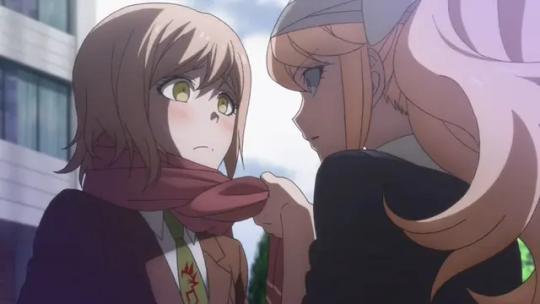
Junko's connection to Ryota is objectively the weakest part of her story, and admittedly a major part of why the brainwashing of class-77 falls under such scrutiny. Whereas every other part of Junko's plan is pretty well-established within her characterization, the connections she makes having actual sense to their conception and development, and just general consistency within the narrative, her meeting Ryota is not only a stroke of random luck on her part, but emphasized as one, and this just does not make sense for a character within said narrative to have never once been characterized as having any level of luck or fortune prior. This is especially glaring in a world that has established luck mechanics via characters like Makoto, Nagito, and Celeste. Junko just isn't a character meant to have luck like this, and never has any sort of moments or accomplishments stemming from luck before or after this outright.
When Junko and Ryota meet, it's because they walk past each other going in and out of the infirmary, and Junko, for no visible reason, decides to start talking to him right then and there. She starts squealing and hugging him, jumping up and down, and says this upon Mukuro's asking why: "I don't know, but... this is what I'm telling myself: This is yet another... fateful encounter!"
There's no rationale to this. There just isn't. It's not her SHSL Analyst talent having picked up on him over time, or her recognizing him via someone else, or anything of the sort. It's totally unjustified random chance for the convenience of the plot, and that's what makes this introduction so weak.
Really, the issue of Ryota's involvement falls more in their introduction than his actual function in the anime. Considering his characterization and the connections Ryota had prior to this, it would've made infinitely more sense if Junko had met Mikan first while in the infirmary, and buttered her up enough for Mikan to introduce the two of them. Knowing Mikan, it wouldn't have taken much, and would've made more sense for Ryota to be so willing to share a part of his life's work while still incomplete if he was introduced to Junko by someone he already trusted. Regardless, that's not what happened, but I say this mostly because I want to affirm that with Junko and Ryota's connection, it's the introduction that doesn't make sense, not what follows.
That said, once the awkwardness of how they meet is out of the way, what follows is fairly reasonable. She asks about his talent, purposefully mocks his interests to trick him into showing off, and then takes advantage of what she learns about him, which just so happens to be brainwashing techniques that she'd already be somewhat familiar with thanks to Yasuke.
Once they're acquainted, Junko uses her knowledge of the school and what she's stolen from the kidnapped trustees to set up Ryota underground where she can keep him under control, and so he can't mistakenly squeal about what she's setting up. She uses his passion against him to bastardize it into what she needs and manipulates him into walking into his own cell by doing so. It's not her most genius move of all time, and it's not a difficult one to understand either, but it's one that works.
What matters most to understand, though, is that she doesn't seem to develop any sort of affection for him in the way that she did for Mikan. When he finally uncovers what she's doing, Junko gives him a simple sales pitch, and threatens him indirectly with Mikan's friends.
By now, she knows damn well that he's met a grand total of two of his classmates, one of which just tried to sexually assault him mere moments prior, so this doesn't seem like the most effective tactic she could've used. But Ryota is a sensitive person. A victim of bullying growing up, the whole point of his brainwashing animations was to make people more empathetic subliminally. So to force him to help her, Junko is able to target this empathy by targeting Mikan over Ryota himself. Her abuse of Mikan is painful for Ryota to look at, and he wrongfully puts all the blame for the way Mikan acts solely on Junko because he doesn't know any better. And Junko lets him, because it's convenient for her to manipulate.
"As you have inferred, the mutual killing video you watched is the reason Tsumiki ended up this way. However, in order to reach my objective, this is insufficient. My lack of brainwashing ability is the cause." -Junko Enoshima, DR3
As we know, Junko is an unreliable narrator. She can and has lied to people's faces for the sake of manipulating them, telling half-truths and intentionally warping the truth to shift her victims' perspective in a way that she wants. We never see Mikan's fall, only cutting from her first meeting Junko to her already being in love with her, and as we've established, not only was Mikan already pretty fucked up prior to meeting Junko, but she doesn't exhibit the symptoms of a complete brainwashing at this point. She still has her mental faculties about her. So logically, that means she's doing the same here. Yes, Mikan watched the prototype video, and yes, it was insufficient. Hence why we as an audience can understand with our meta-context that Mikan still has her mental faculties intact. Ryota, on the other hand, doesn't have that benefit, so when Junko says this, the implication is that Junko took the meek, shy, kind version of Mikan that Ryota knew and twisted her into an evil, hypnotized slave of Junko's. It's an intentionally warped perception of the truth that Junko uses to her advantage, to the point where she flat-out says she can't brainwash at this point and brainwashing is still commonly attributed as the sole reason for Mikan's behavior in this scene.
Ryota cares about the few friends he does have, taking Mikan's and the SHSL Imposter's requests to take care of himself by resting and going to the infirmary even when he doesn't want to to ease their worries. So of course, when faced with the idea that he could prevent Mikan's loved ones from getting hurt, even though he doesn't know the vast majority of them, he caves regardless. It doesn't have to affect him. The people around him are important enough for this threat to work anyways. They're not his precious classmates, but they are the Imposter's; they are Mikan's. And Ryota is a very weak man. So he complies.
Later, when he escapes, she hunts him down to thank him for his help, and then allows him to run away, letting him believe that he's the reason why class 77 were the ones to be brainwashed.
"The video I had you help me with. The complete version of that. I'll have your whole class watch it now!"
The 'video' that Junko has them watch is a live recording of Chiaki's death maze. Meanwhile, the Despair video that the Reserve Course goes on to watch after the riots, and that Chisa Yukizome is subjected to, are different videos entirely, forcefully reprogramming them and removing their hope outright. Since Ryota's an animator, we can ascertain he's responsible for the one the Reserve Course watches, with an animated Monokuma. In other words, Junko does not, in fact, have his class watch the video he helped her make. She's lying to him to send him further into Despair.
"Imagine it... Because of you, all your classmates will fall into a deep, deep Despair. They'll become people who think of nothing but plunging this world into Despair, the Super High-School Level Despairs!"
It's a bold-faced lie, and one that Ryota has no knowledge with which to contradict it. Because he's a coward, and because Junko's already messed with his head so much, he runs and hides rather than face what he's done. She even leaves him with parting words of responsibility, twisting what happened with sarcasm so he'll always blame himself for her actions.
youtube
Ryota is by no means a perfect victim, but that doesn't change the fact that he is one. He was manipulated, and when he found out he was manipulated, he was threatened, albeit indirectly. But Junko was always planning to send Hope's Peak and the world into Despair. His video made it easier for her, but he is not and never was responsible for her actions. And by making him carry the guilt of her choices, she leaves him in a state of pathetic, guilty Despair akin to a genuine 'thank you' from her.
Part 15- AI Junko
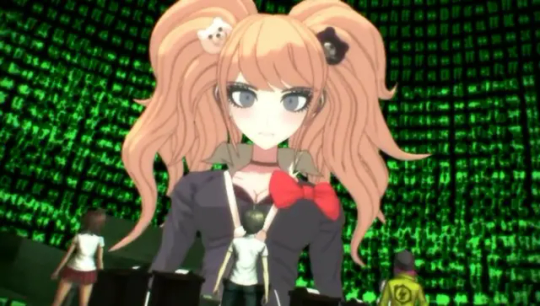
AI Junko(or Kaijunko, as I like to refer to her as) appears as the reincarnation of Junko, created by Chihiro's AI technology and forming a Despair virus to infect the Neo World Program. She doesn't allow the Hope Restoration Program to follow through, instead taking Usami's teacher role and manipulating the world to be a Despair Restoration Program. The motives she uses are extremely personal and targeted, hyperfocusing in on specific members of the class each time to ensure a murder happens the way she needs it to.
Something that's important to remember, though, is that Kaijunko IS NOT Junko. She's an artificial recreation of the real Junko intended to continue programming Despair into the world after she'd inevitably passed. And as such, she isn't a 1:1 replica, and there are key differences between the two in the same way Alter Ego is different from Chihiro and Observer Chiaki is different from the human Chiaki.
The reason Junko fell into SHSL Despair was because her intellect combined with human need for stimuli left her with such a deep depression and boredom that pain and suffering were the only ways to make her feel alive. But as an AI program, Kaijunko isn't burdened by that same need. She's programmed to have the same goal of spreading Despair, but she doesn't have a personal, insatiable need for Despair in the way that Junko did. And this leads her to have a different endgoal for the final trial than what the real Junko might have chosen.
Kaijunko observes and learns from Izuru Kamukura and the RoD, as well as the Towa City residents, in the same way Alter Ego learned from class 78. The brainwashing video forcefully reprogrammed them, yes, but ultimately, they still loved each other as friends and classmates, even if Chiaki wasn't there with them, and it's that dedication to each other that Kaijunko learns about. It's why those connections are the ones tested within the SDR2 killing game; Kaijunko, who actually came into contact with the RoD personally and was toted around by Kamukura, would know what to use to create a killing game that would leave the most desperate group of survivors at the end to follow through on Junko's plans to reconstruct them all into her.
However, because Kaijunko isn't constricted to the same need to destroy herself, she can afford to bend the plan around impulsively in the way Junko herself had in the past, but in a way that'd align with the original Junko's goals to harm others around her without needing to harm herself anymore. Thus, in the final trial, she doesn't push those desperate survivors to want to escape. Instead, she uses her knowledge gathered to make them want to stay in the world Makoto provided to them, where none of them have to face the consequences of the RoD's actions, Kaijunko included.
One of the ongoing themes across the board for SDR2 is how artificial everything about it is. The island is artificial. Chiaki is artificial. Hajime is an artificial hope. The RoD are artificial Despairs. Similarly, Kaijunko is an artificial Junko. She goes through those same motions as the original Junko, but she is not, cannot be Junko. She can only mimic, never be, and so she tries to escape altogether by resetting the game to a state where the RoD live an escapist dream, and she's locked in the game with 'her' classmates forever. But despite this, because she's mimicked Despair, she's become part of it, and Hajime and the others do the one thing Junko can't ever succeed in doing: they choose themselves, and she disappears without a chance of hope, just like Ryoko before her. Hajime and class 77 forge a new future, and Kaijunko dies trapped in the shadows of the past.
youtube
8.6.1- Hajime Hinata
If the battle between Makoto and Junko in THH is a battle of ideologies- hope and Despair- then the battle between Hajime and Junko is a battle of wills. This is the battle between self-love and self-hatred, and both Hajime and Junko are faced with their opposite, only to reject it in favor of what they want for themselves most.
Hajime's main character arc is one of self-discovery. When we meet him, he's been stripped of everything that's made him himself, having a gap in his memory that has his identity within it. This is a direct parallel to Ryoko Otonashi's lack of memory, having no identity or memories of the past with which to identify herself. She has only the words others tell her. But in the case of Hajime, it's revealed that the supposed gap is virtually nonexistent. He has no special talent or ability that differentiates him from the rest. He's a blank slate- empty, one might say. And this is quite similar to Ryoko. In a similar way, Izuru and Junko are both burdened by the weight of their talents. In the case of Izuru, he was operated on to remove all emotions and thoughts to be a symbol for Hope's Peak, while Junko's Analyst talent left her burdened with the inability to enjoy anything.
There are also similarities to Izuru and Ryoko, having both had their minds operated on to remove all memories of their true identity and become someone new, while Hajime and Junko both feel a heavy burden of who they are and feel as if that makes it impossible for them to enjoy their lives as they are. This parallel is exactly why Hajime's choice to live, and choosing to live in the face of retreating into the NWP, is so impactful, especially when faced with the shadow of Junko Enoshima.
Junko never chose herself. She never could choose herself, and when given the opportunity to, she rejected it entirely, too addicted to the cycle of self-destruction she'd created for herself. She felt as though Despair was the only answer for her, so she could never stop searching for it, even from beyond the grave. That not just she should feel it, but everyone should. Everyone needed to know the way she felt. And she used anything and anyone at her disposal to make sure the world burned, because she wanted to feel, and what was the point of such a world pretending not to feel Despair anyways?
Hajime chose himself. It wasn't for anyone but himself. When looking in the face of what he'd turned himself into for hope, he was able to come to the conclusion inverse to what Junko did- that he didn't need to change for the sake of anyone else. It didn't matter that he wasn't SHSL like the people he admired, so long as he lived for himself. Meanwhile, when Junko reverted back to herself, it was like dragging herself back into a cage, being burdened by the same kind of talent that Hajime never needed. A talent she never asked for was the source of her undoing, while Hajime's lack thereof almost killed him in the pursuit of one.
The dichotomy of the talented vs the talentless is one that can be felt extremely strongly between dr0, sdr2, and dr3, but especially when in regards to the divide between these two characters, as it again circles back to the damage the hierarchy they find themselves in creates. Junko is a heralded SHSL Analyst and Gyaru, dubbed by Japan as superior and handed the influence that makes it so much easier for her to poke holes in the system until it collapses. Even when all the evidence is placed on her, she's the SHSL Analyst, and can convince HPA to keep quiet for her. They cover up her crimes, and when they can't anymore, she's part of the 'chosen' that receive protection from the government while the Reserve Course and their families are never mentioned again. Hajime has nothing, is considered nothing, is even beaten and told to 'take to the leash and collar already' to keep him complacent. His choice to become Kamukura is weighted by the pressures of the system he's trapped within, holding him not only to his desire to be considered important, but to be equal, not to mention the debt he's placed in just for the right to participate in said hierarchy. Those treated like nothing are downtrodden to accept the system and uphold it, and those with power can do whatever they want and the system will protect them.
In a lot of ways, Hajime and Junko are more similar to each other than any other two characters in the franchise, all the way down to the sacrifice of the ones they closest around them sending them on their final path- Junko with Mukuro, and Hajime with Nagito. And in mirroring this, Nagito eventually returns, while Mukuro never can.
Mukuro and Junko are twins, and work to attain the same goal, but they're still very different people. Junko is absolutely fucked up, and Mukuro follows her out of a twisted need to be by her side, even when it leads to her eventual death. Hajime and Nagito are repeatedly called out as similar, both needing the other to get through the trials and survive and being forced to come to an understanding, but still retaining their individuality and separate beliefs. When Mukuro dies, it's directly because of her loyalty to Junko, even at the cost of herself, and Junko's betraying her resulted in both their deaths. Nagito died because of his loyalty to hope, even at the cost of himself, and Hajime's trust in him was what allowed him to survive and eventually bring Nagito back. Where Mukuro was metaphorically absorbed into Junko and forgotten, Nagito's individuality was what became critical to Hajime.
15.1- Shirokuma & Kurokuma
This part will remain brief. Shirokuma and Kurokuma are the AIs found in an all-white and all-black bear in UDG, each positioned on one side of the Towa City genocide and perpetuating the war by manipulating the Towa siblings.
Shirokuma is the 'good' one, and is positioned with the adult survivors. He's the one responsible for creating the underground safe house, and is Haiji's right-hand. Even when making it appear as though he wants peace first and foremost, he goes on to pilot Big Bang Monokuma and stands with Haiji, playing him and Komaru to escalate things.
Kurokuma is the 'bad' one, and is the one who gave Monaca the plan to create a Successor in the first place. He's a chatterbox that's an advisor to the WoH, presumably left behind by Junko or created by Monaca, and pushes the kids into their murder games by standing with Monaca.
Near the end of the game, Kurokuma reveals that Shirokuma is his little brother, and later in the epilogue, we learn that they were actually not distinct AIs, but rather, the same AI Junko as in SDR2 that was working both sides to destroy Towa City. Them taking the form of siblings mirrors that Junko herself was a twin, and isn't truly complete if she doesn't have her sibling still present.
Part 16- Big Sis Junko (UDG)
Following SDR2, UDG returned a master-manipulator Junko to the scene via the Warriors of Hope. Though AI Junko is present and perpetuating the war through her manipulation of the Towas, Junko herself is all but gone, survived only through the kids' memory of her, and what they have to say is extremely telling to the capability Junko really had to push people further towards her Despair.
Her role as 'Big Sis Junko' came when she prevented them from killing themselves, though how she knew to be there at the right time is unknown. We can assume she'd been keeping eyes on Monaca already and, through her Analyst talent, figured out when the right time to be to show up.
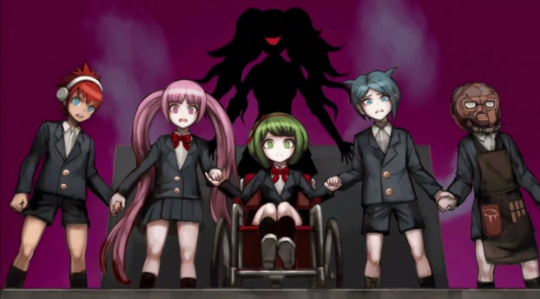
From there, they became the Warriors of Hope, not missed by their parents that hated them or worried for by the world, and Junko was free to mold them however she liked. She did this by teaching them to lash out at the people responsible for their suffering- not just their parents and abusers, but any and all adults. She was a teenage girl who'd taken pity on them, as far as most of them saw, and so they trusted her as the first and only person besides each other to show them kindness. They became ideological, lumping all adults within the same box of 'demon' because they were given no other comparison, and they did it for Junko.
"As far as I remember, the first adult we defeated was a random person we didn't even know. .... From there, we leveled ourselves up by killing Demons. Big Sis Junko was so pleased..." -Nagisa Shingetsu, UDG chapter 4
They came to rely on her as their one true savior, and even those of them who knew they were being manipulated didn't care, if only it meant they weren't the ones being beaten anymore.
"At least, at the time I thought it was a miracle. But later I learned it was inevitable. She came into my life just to take advantage of me." -Monaca Towa, UDG chapter 5
"'You guys... were completely deceived by Junko Enoshima.' 'And what's wrong with that? Did I not tell you that we are her possessions? We would rather her take advantage of us than horrible adults.' 'Sounds like it's too late.' 'Say what you like. Big Sis Junko... gave us hope. That's the truth.'" -Toko Fukawa & Nagisa Shingetsu, UDG chapter 4
And when she died, she was martyred, a victim of the cowards who'd believe in the adults and Hope's Peak. By dying, she completed her manipulation of them, ensuring in her absence, they would only remember the kindness she offered them. Anyone who said otherwise must be a demon.
"No matter how much you hate us, no matter how much we're shunned, we're definitely not wrong. That's the real truth, because Big Sis Junko said so. .... Those adults who took her away from us and said that she was the bad one! They're the filthy ones; they're the ugly ones, the disgusting ones!!!" -Jataro Kemuri, UDG chapter 2
This manipulation and creation of the WoH stemmed from a practical source, as we learn in the game. By Monaca's own admission, Junko only ever cared about getting access to Towa City tech for her Monokumas and for spreading Despair wide-scale. Having highly talented and abused kids to carry out her will when she was gone was just a very welcome bonus; having the youth primed to continue spreading Despair when she was gone would create a legacy, and her ghost would continue to haunt those with hope for at least another generation. Enter Monaca Towa.
8.8- Monaca Towa & the WoH (CW: Mentions of Incest & Pedophilia)
Monaca is differentiated from the rest of the Warriors of Hope almost immediately as being more aware of what the fuck is going on than her friends. She's the L'il Ultimate/SESL Homeroom that loves hearing everyone else talk about their thoughts and feelings, she's the one who invented the Captives game, and she has swastikas in her eyes, because Nazi symbolism was the only way we could convey she's a dictator I guess. As the game goes on, we see that her relationship with Junko is different from the rest of the class- a bit more substantial. She has much more knowledge of Junko's desire for Despair and knows the real reason Junko sought them out in the first place. She uses her friends' idolization of her to trick them into helping her make a new generation Junko to carry her memory. She also has a hidden bedroom full of photos of Junko, and one in particular stands out among the rest.
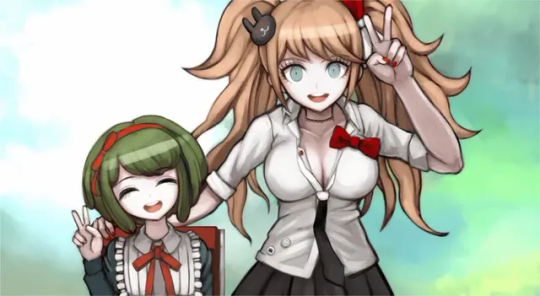
Junko and Monaca, all by themselves, posing for a photo. None of the other WoH are present for this photo. It's also worth noting that Monaca's in her WoH outfit, even though in every other flashback or cutaway to the past before Junko's death, they were all in their Hope's Peak Elementary uniforms. If it weren't already obvious, these two were spending more time together than with the rest of the WoH. This is primarily because of the explanation we've already been given- Junko needed tech, Monaca was the one that had it. Of course extra work was gonna be put into her, and if she felt special in comparison, she'd become more like Junko.
Both Monaca and Junko are a younger sister, and their older siblings are established as pretty creepy in their own ways. Mukuro is incestuous and lusts after Junko whenever they're together, or even just when thinking about her. Haiji, meanwhile, is a pedophile, mentioning he likes girls younger, "as young as I can get 'em." I don't have to explain why the knowledge he has an extremely younger half-sister he expressly doesn't think counts as family is a bloodcurdling realization given this information. While they seem to have very different levels of connection with their siblings, this is a pretty distinct commonality to give both masterminds, especially when one is meant to immediately succeed the other. Both girls are also considered the "genius" of their families, while their older siblings use more brute strength.
Monaca is a character built upon the mimicry of Junko. We know this because we pay attention to the game, but also because if we look at the concept art and beta forms of the Successor, we can see without question that creating a "New Junko" was always going to be a major part of UDG, as not one, but two unused Successor characters were considered before Monaca eventually became who she is today as the mastermind and true Successor.


Monaca throughout UDG undergoes a similar behavior to Junko in the way that she treats the WoH, but it's in a way the fundamentally misunderstands why Junko acts the way she does. Monaca is a child, and idolizes Junko, but that doesn't mean she actually understands her, even if she got much closer than her friends.
Monaca manipulates and discards the other WoH one by one, making herself the center of their movement and letting them believe they have control over what they're doing. She motivates them with a Paradise that'll never exist, similar to how Junko motivated the reserve course to stand up against Hope's Peak, and they take over Towa City. Whenever a WoH disappears, she decides whether or not they're mourned, but it appears as though she doesn't care and never did. She quickly forgets Masaru's name, barely bothers with Jataro, and later in her backstory monologue, proudly claims that when Junko met them, she was planning to let her only friends all kill themselves as a prank and not jump herself. She takes all the steps possible to Not Care about these people, similar to how Junko seemed not to care about the people she loved.
If Monaca spent enough time around Junko to observe and pick up this pattern, it likely means she also saw how little Junko actually cared for herself and her friends. This would explain why she starts acting as though she doesn't care at all for her only friends in the world and discarding them, wanting to emulate Junko, her idol. It also means she knew Junko didn't care about her, but her talents, and just didn't care because it was Junko. Again, this is a mentality not just held by her within the WoH, but because she was given a peek behind the curtain, she filled in the blanks in her head and let herself continue to be manipulated by Kurokuma, all in the hopes that Junko could return and manipulate her again. She needed a Successor, someone to fill that sisterly void again. And in that desperate desire, she inadvertently set herself up to someday become the SESL Despair.
Nagito's intervention is directly stated as the reason why she ends up abandoning this role as SESL Despair and fucking off to space as SESL Apathy instead, shrugging it off as 'not wanting to end up like he did'. This appears to be a deviation from what was originally intended for her, as not only was this wrapped up in a singular episode of an anime not actually about her, but the teaser images for a UDG 2 in UDG's credits ultimately ended up unused, and V3 totes a teaser of a canceled UDG 2.
Part 17- Junko's Apocalyptic Crash Course
"Right now, Hope’s Peak Academy is set up in a pyramid sort of idea that a third world country would use; it’s only really there to concentrate it’s effort on the 'super high school levels', for their benefit, and then below them are the reserve students from the preparatory school. .... The teachers here don’t really think any of the reserve students really belong here." -Yasuke Matsuda, DR 0
As we've seen repeatedly throughout the previous games and DR 0, Junko's strengths don't come from sheer force of will. She didn't take some perfect world of hope and twist it into a world of Despair by flipping some ideological switch. She's charismatic, but still human. Junko's strength comes from her ability to analyze, her high intelligence, and her charisma combining to create a master manipulator. Using the skills and people at her disposal, she was able to amass a cult following, and inspire the downfall of a society that was already flawed by attacking the weak points that were already present. Ergo, Junko's SHSL Analyst talent led her to not only infiltrate the school, but also to find the flaws within it and the lies it covered up by taking advantage of the Kamukura project wearing the school thin.
She may have been the face of the Despair movement, but she wasn't a singularity. She had a small group of people she trusted with a certain amount of information, and who had skills that would become beneficial to her. Mukuro is the obvious right-hand, as previously discussed, and perhaps the only one she legitimately believed to be an equal, but there was also Yasuke, Izuru, Ryota, Mikan, and Monaca, all of whom she attached herself too and all of whom had an extremely useful talent or title that was immediately beneficial to her cause. These people were able to directly carry out her desired acts of Despair and work alongside her, reporting back to her to ensure things were running smoothly. These were people who were needed directly as they were, and who were most useful when they believed she genuinely took interest in them, whether she actually had or not.
In a world already so flawed, with thinly veiled atrocities already taking place by people who believe in a caste system of talent, earning a downtrodden majority's trust is as simple as taking the blindfold off. Manipulating the people she'd attached herself to let her reveal key information at her leisure and drive the school and its inhabitants to Despair without them noticing or knowing to take action until it was too late to stop it. Something manmade, that turned into a disease and spread across the world, infesting it with the Tragedy and burning the oh-so-predictable world to the ground, all while standing as the eye of the storm- that was the power of the SHSL Despair that Junko worshipped, and she became its spokesperson, sending the world into a spiral.
Part 18- Junko's Legacy (Death of the Human, Birth of the God)
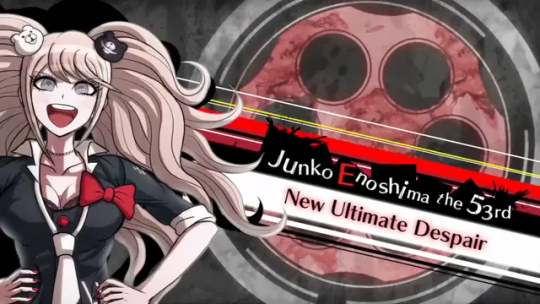
Everyone that loves Junko, misunderstands Junko. This is a fact that we see more than once. Mukuro obsesses, not loves. Yasuke romanticizes a childhood he can never return to. Monaca idolizes her. Mikan overtly sexualizes her. Her classmates know nothing of her self-destructive nature. Junko knew this and Despaired every time. But this fundamental misunderstanding of who Junko is didn't just exist in the game. In real life, Junko Enoshima became an iconic villain, the teenage girl that burned the world, the Ultimate Despair. She was insanely popular, and still is. And the more popular a character gets, the more susceptible they become to misinterpretations, fanon, oversimplification, etc.
In becoming such a well-known figure, Junko Enoshima the person got lost in translation. There was now Junko Enoshima, the mascot, the figurehead. This isn't a phenomenon exclusive to Junko, of course, but as the titular villain of the series until this point, how could the series continue without her? To this very day, people can't agree on who Junko was or who she actually cared about or if she ever even cared for anyone at all. And when NDRV3 was made, it took advantage of this to tell its own story, utilizing Junko Enoshima specifically to demonstrate flanderization of characters within its lore.
Junko Enoshima is not a real person. She's a fictional character. All her motivations, her thoughts and feelings, are fabricated stories and vague implications from the writing of real people. And in V3, that 'real person' is Tsumugi Shirogane, one of many cogs in the machine of Team Danganronpa, who dresses up as Junko and uses her face to become 'Junko Enoshima the 53rd'. Junko has been used and reused over and over and over, to the point where the original vision has been muddied beyond belief. What she was at the beginning, way back in THH, no longer exists. She's now a silly mascot, a familiar face that fans can point at and dress as and draw fanart of, and a face that Team DR can profit off of. Tsumugi's portrayal is laughably inaccurate to the original Junko. It's a costume, nothing more, and the dialogue she gives when 'in-character' is simplistic and insignificant. All its weight comes not from the meaning, but from the reference for reference's sake.
Junko's appearance in V3, like many other moving parts of V3, reference real-world fandom culture. It's appealing to both the in-universe fandom and the real one, bringing back character sprites and voice actors and poking fun at its own ridiculousness because none of it is real, none of it ever was. It was because Junko was fiction that she could do everything she ever did. Her Despair has meaning, but that doesn't mean she felt the feelings we're told she did, because she never existed to feel them. And that's the thing that lets her forever remain an enigma; she is Danganronpa's villain, and to become immortalized in Despair, she deconstructed into nothing but the word Despair, a fate that is in and of itself Despairful.
8.9- Tsumugi Shirogane
Tsumugi Shirogane is the mastermind of V3, and believes wholeheartedly in Junko Enoshima as the true villain of Danganronpa. Tsumugi is built as the fandom insert of DR, being immersed in fandom culture in every conceivable way- winking at the camera, making references to other fandoms, the love and joy of making cosplay- but also the less palatable parts of major fandoms, like her purist views of cosplay, her usage of incest as both a serious plot point and as a gag, and even does blackface when cosplaying as the dark-skinned DR characters of dr1 and 2. She's also the in-universe producer of the season. Therefore, Tsumugi also represents content creators, and how even the creator themselves can lose the plot of the character in their attempts to create what they perceive to be a compelling story.
As Tsumugi is explaining her story and why she tied it back into the Hope's Peak era, she pretty openly admits that a) she sees it as a perfect reproduction and b) a necessary writing choice in order to make it interesting. Both are false, as not only is V3's continuity in a separate world from the Hope's Peak era, but her presentation of Junko and the voice lines aren't displayed the same way Junko had acted in previous installations.
"'So... you're just a freak pretending to be Junko Enoshima, huh!?' 'No, a perfect reproduction! Perfect reproductions are exactly the same as the original.'" -Maki Harukawa & Tsumugi Shirogane, V3
She presents Junko as a singularity, the Ultimate Despair, and brazenly parades her face around as the immortal and ever-present true Despair. She's the 53rd Despair simply because her influence wouldn't allow her to fade away. She's become Despair-incarnate, but in making new games, Team DR has forgotten why Junko caused Despair in the first place. She didn't do it just to do it; she threw the world into Despair because it made her feel human to feel Despair. And yet when Tsumugi explains Junko the 53rd's plans, it's nothing but a big show, and that's exactly what a surface-level Junko looks like to the masses- a high-school girl that ended the world for fun.
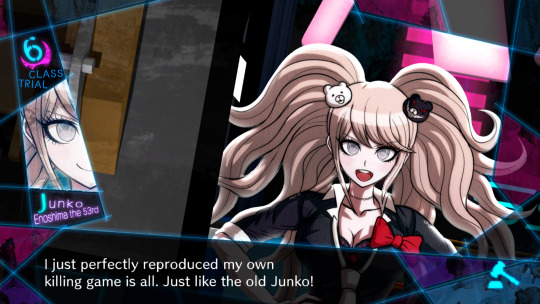
Junko's games had meaning. Even when she didn't feel particularly connected to a person, like the RoD, she still brought them into Despair for a purpose. She was an analyst, and did the things she did with intention and with care. Attention to detail and careful manipulation with the face of a charismatic gyaru was her forte. But Tsumugi's so-called "perfect reproduction" is a story full of plot holes and contradictions, all caused by some need to deify Junko. In other words, as they refused to let Danganronpa go, they lost the plot, and Junko's humanity went with it in a desire to continue using her image when writing new stories. In becoming a god of Despair, her origins as a human were forgotten.
Part 19- Despair Into Tomorrow (Why We Care)
Junko Enoshima is an enigma. She is Despair incarnate, a pillar of the Danganronpa world created by her own hands, hellbent on burning herself to the ground. She's a character of poetic irony, unknown to all as anything but Despair. She was born with a perfect mind, and in trying to feel human, feel pain, feel Despair, she became permanently deified by all that she loved and all that she met, whether that was as a savior who killed a cruel world or a demon that detested hope.
At every turn, Junko's actiona are filled with malice, and yet so often that malice is directed at herself. Living in a peaceful world pains her because it leaves her bored. Anhedonia is a cruel mistress, and those who claimed to love her could never once comprehend it, because they couldn't feel the way she felt. The only thing she had that connected her in any human way to others or to herself was grief, and her entire story becomes one of self-sabotage. Despite that, though, she's not the only character burdened by anhedonia, and her self-destructive nature outstretching to the people and world around her is designed as a story of caution.
In each and every installation of Danganronpa, Junko and the other masterminds inspired by her fail because of their key difference in connections. When Makoto appeals to his classmates, they're reminded of their own desires to live and their love for each other- Hina's memory of Sakura, Syo's love of Byakuya, Kyoko's and Byakuya's love of Makoto himself. The same can be said of when Hajime chooses himself, to fight for himself, and is inspired to do so by Chiaki. Every other survivor has someone that inspired them to live for themself- Peko, Nakomaru, Gundham, the people around them. When Komaru is saved by Toko, it's because she took the time to connect with her and with Syo, and that love saved her from destruction. When Munakata gave up hunting Makoto, it was because of his love for Chisa. And when Shuichi declared he wouldn't vote, it was so that Maki and Keebo wouldn't be forced into sacrifice of a system that would hurt them over and over again.
Junko had connections. Junko had people she loved. Junko had another half. But she burned them one by one, until there was nothing left but her, and then she burned that too. She's a villain even to herself, and she knows it. She feels Despair upon Despair and even then can't regret it, because she wouldn't let anything else touch her heart besides it. It's an inherently self-fulfilling prophecy to only feel Despair, because in order for that Despair to exist, she must have felt love first. But she doesn't acknowledge her love and her vulnerabilities because she believes those fall under her 'factory settings'. Comfort is boring; safety is boring, and boredom was her enemy, an enemy second only to herself.
Junko's actions stem from a deeply embedded self-hatred. She was too smart and too comfortable, and so her boredom became everything she was. She believed the lie she told herself, that pain and grief and Despair was the only answer. Don't be like Junko. Don't believe the lies you tell yourself. Even in an unjust world, you can try to make things better without making them worse. Feel your Despair and let it go. It is okay to let it go. You are still human, no matter what image the people around you have, and to be seen, you must first be vulnerable.
Afterword
JESUS FUCKING CHRIST IT'S BEEN OVER 5 MONTHS. I made jokes and gags about 'getting this out before 2025' but I didn't think that would actually end up as my deadline. Holy fuck.
Junko's analysis is by far the beefiest I've done so far, and very well could remain the biggest one in this entire series of analyses (I think Kyoko, Makoto, and mayyybe Chiaki or Hajime might get close, but otherwise? Those are def gonna be the big 5 though) But hey, that's what being the mastermind of the franchise gets you. In retrospect, Junko probably should've been the grand finale, not part 5/17 of this series' part 1, but whatever. I'll save that grand finale for Kyoko instead
This will probably be the most controversial analysis I put out, alongside the eventual Mukuro one. I know people are, uh, divided on their relationship, but I did my best to stay objective and look at it from an unbiased viewpoint for what they offer narratively and its effectiveness. And I hope people are able to see that. Just in case, though, I'm gonna have anons off for a bit until whatever circulation this post gets dies down lol
Honestly, my perception of Junko has changed so much over the course of these past several months. It's not like I didn't like her before, but she's morphed into one of my favorite villains in all of media after this. This girl just cannot fucking die, no matter how much she wants to, and I think there's something so deeply compelling about a villain that wants nothing more than to self-destruct and burn the world with them, especially if you've fallen into a depressive state like the one she's in before
Good news, though! The next analysis set is Hifumi's, which means it won't take nearly as long as this whopper of a tumblr post! I'm actually very eager to deconstruct him, so hopefully we can go back to the summer days where I was able to crank out an analysis after 2 weeks. Please, god, can we go back to the summer days where I cranked out an analysis after 2 weeks
Catch ya later! :P
#danganronpa spoilers#cw incest#enoshima junko#danganronpa enoshima#ai junko#mukuro ikusaba#makoto naegi#hajime hinata#izuru kamukura#ryoko otonashi#yasuke matsuda#mikan tsumiki#ryota mitarai#matsushima#junkan#DR character analysis#media analysis#danganronpa#character analysis#monaca towa#warriors of hope#tsumugi shirogane#character study#monokuma#thh#dr 0#sdr2#udg#dr3 anime#ndrv3
202 notes
·
View notes
Text

168 notes
·
View notes
Text


hello me
212 notes
·
View notes
Text


Junko and Ryoko for kitty_box_101 on instas mermaid collab!!




[NOT A SHIP.]
#not a ship#danganronpa#danganronpa zero#freshyart#ryoko otonashi#otonashi ryoko#danganronpa ryoko#ryouko otonashi#dr junko#danganronpa junko#enoshima junko#junko enoshima#danganmermaycollab
58 notes
·
View notes
Text
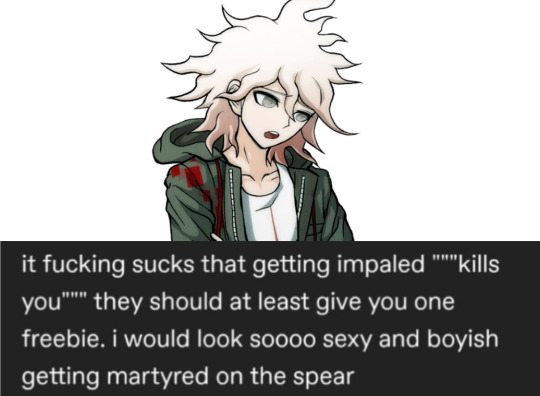


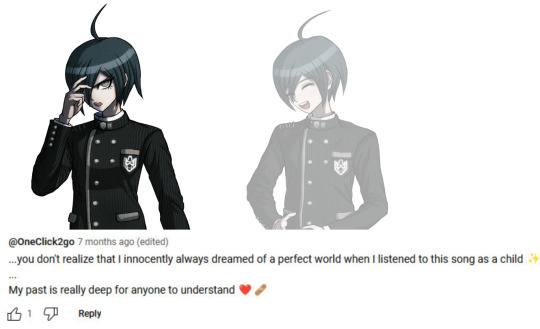

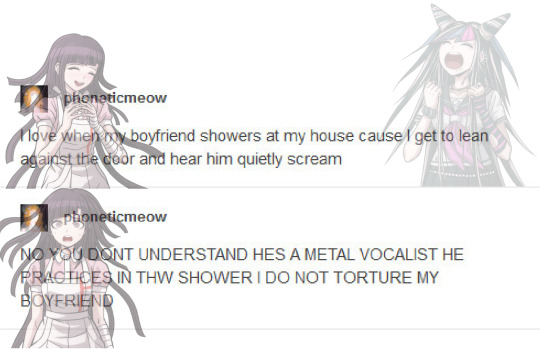

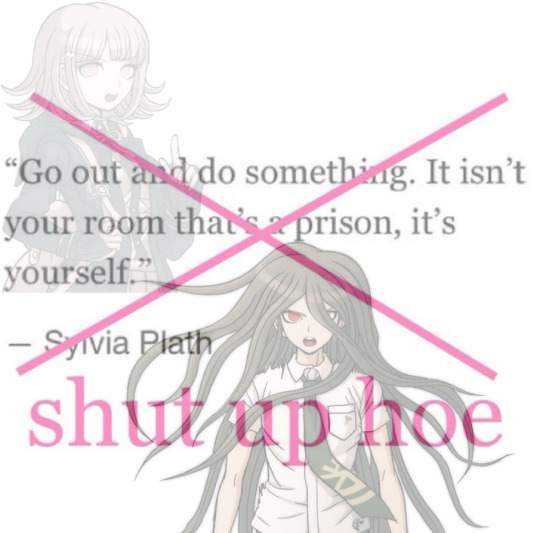
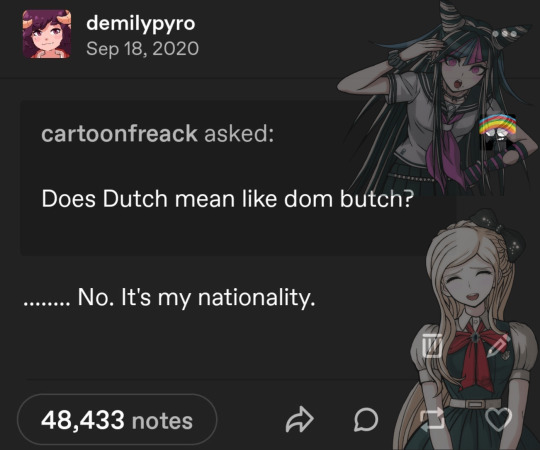

#danganronpa#junko enoshima#mikan tsumiki#shuichi saihara#hajime hinata#chiaki nanami#ibuki mioda#kazuichi soda#hiyoko saionji#izuru kamukura#sonia nevermind#danganronpa meme#danganronpa memes#danganronpa textposts#apple memes#oh and#nagito komaeda#yasuke matsuda#ryoko otonashi#kyoko kirigiri#cant believe i forgot#tsumioda#sonbuki#matsushima#hinanami#junkan#i think that’s it#mine
526 notes
·
View notes
Text
𝗕𝗶𝗿𝘁𝗵𝗱𝗮𝘆 𝗗𝗲𝗽𝗿𝗲𝘀𝘀𝗶𝗼𝗻
⫘⫘⫘⫘⫘⫘⫘⫘⫘⫘⫘⫘
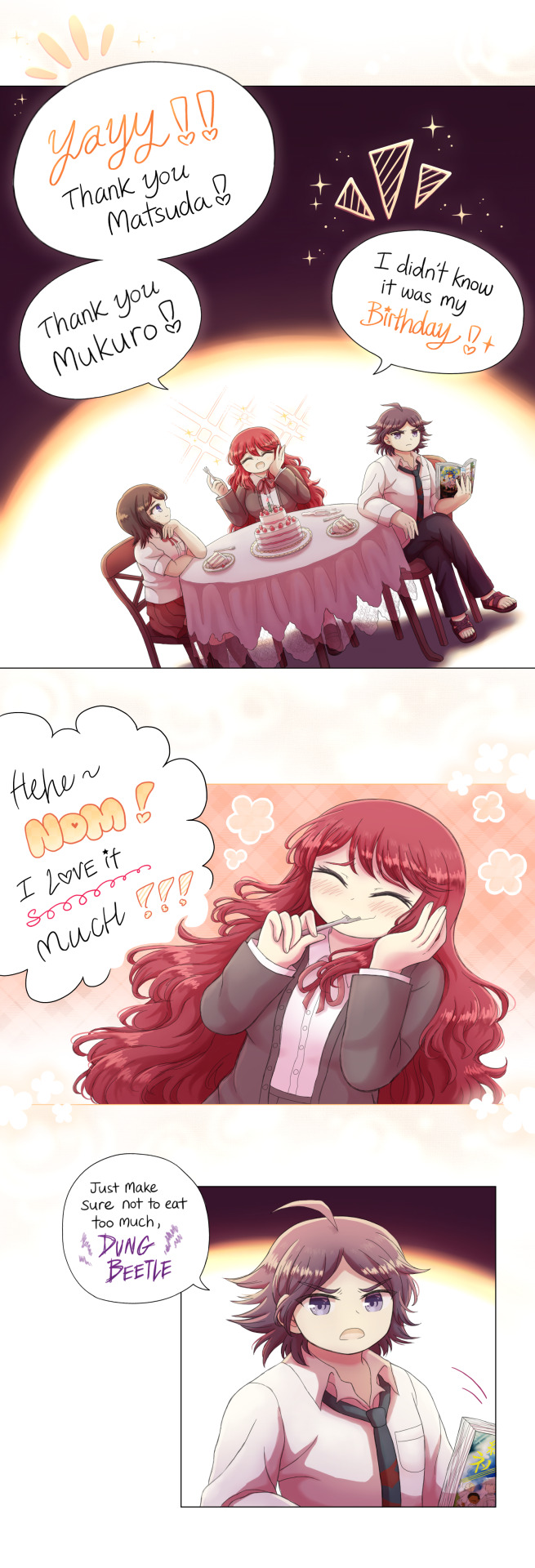
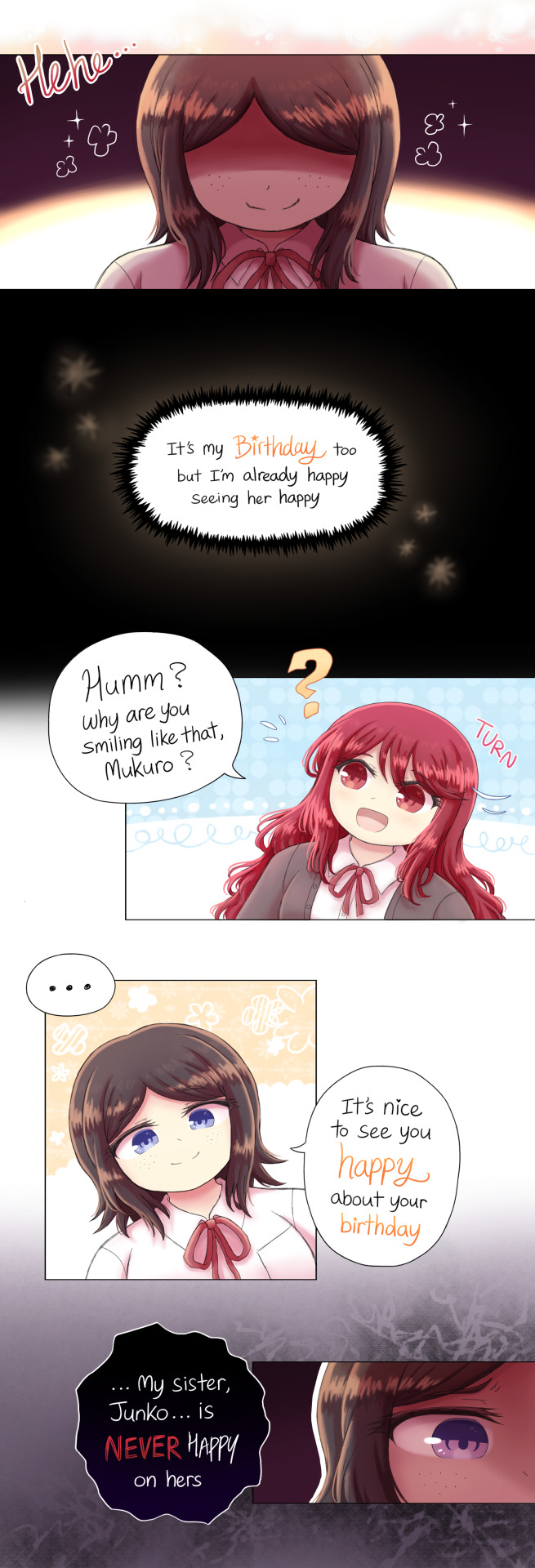
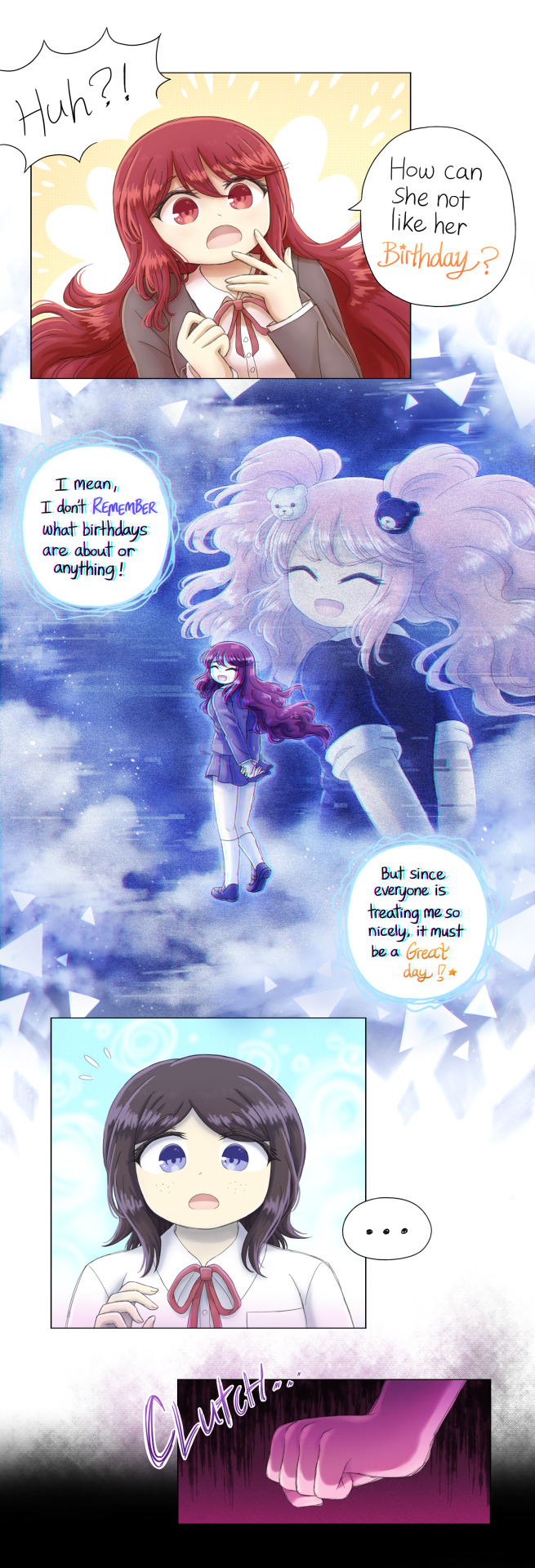
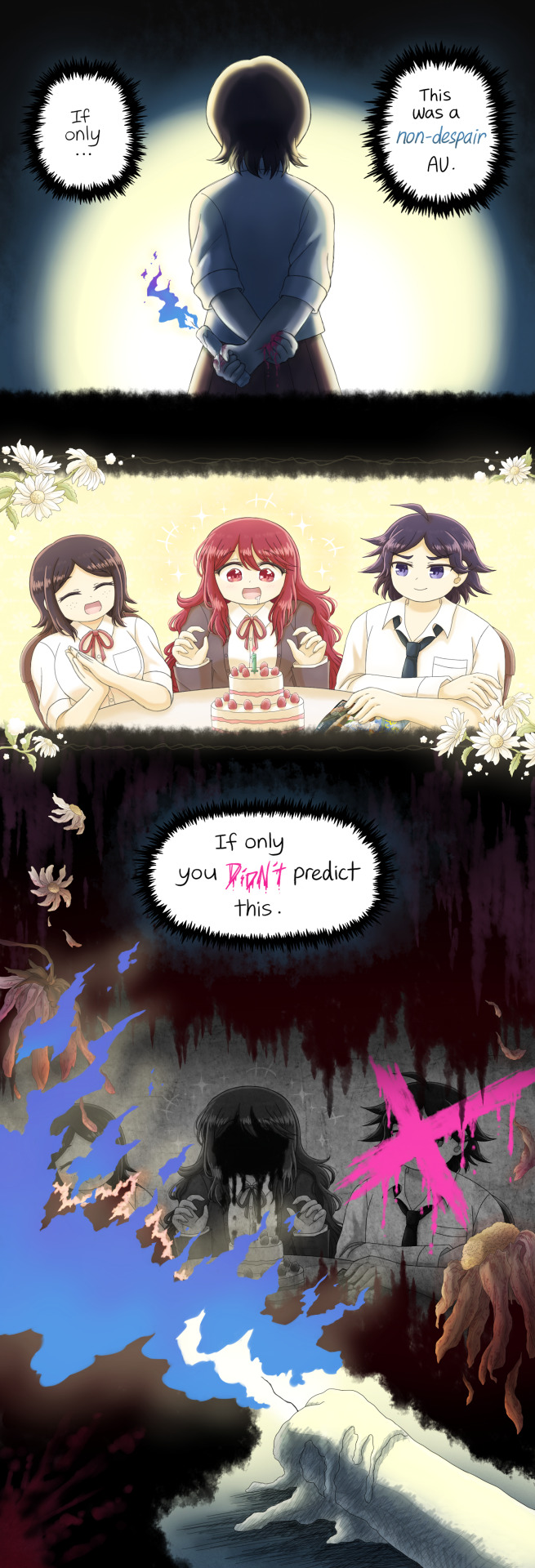
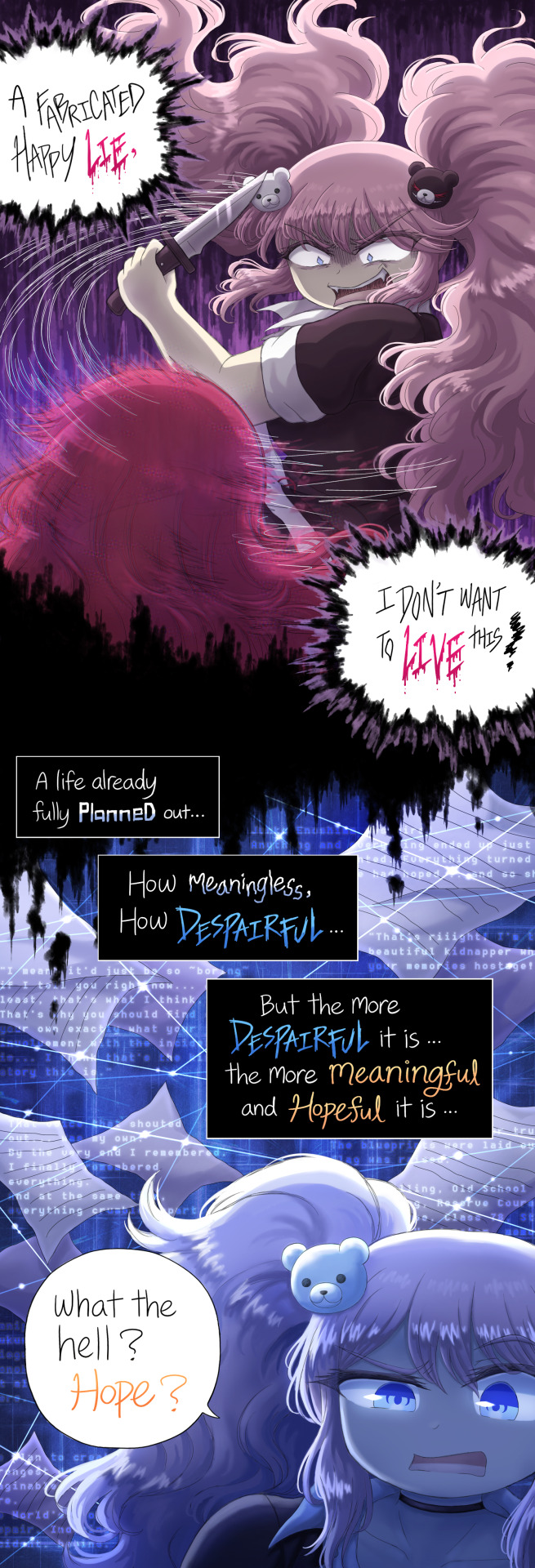
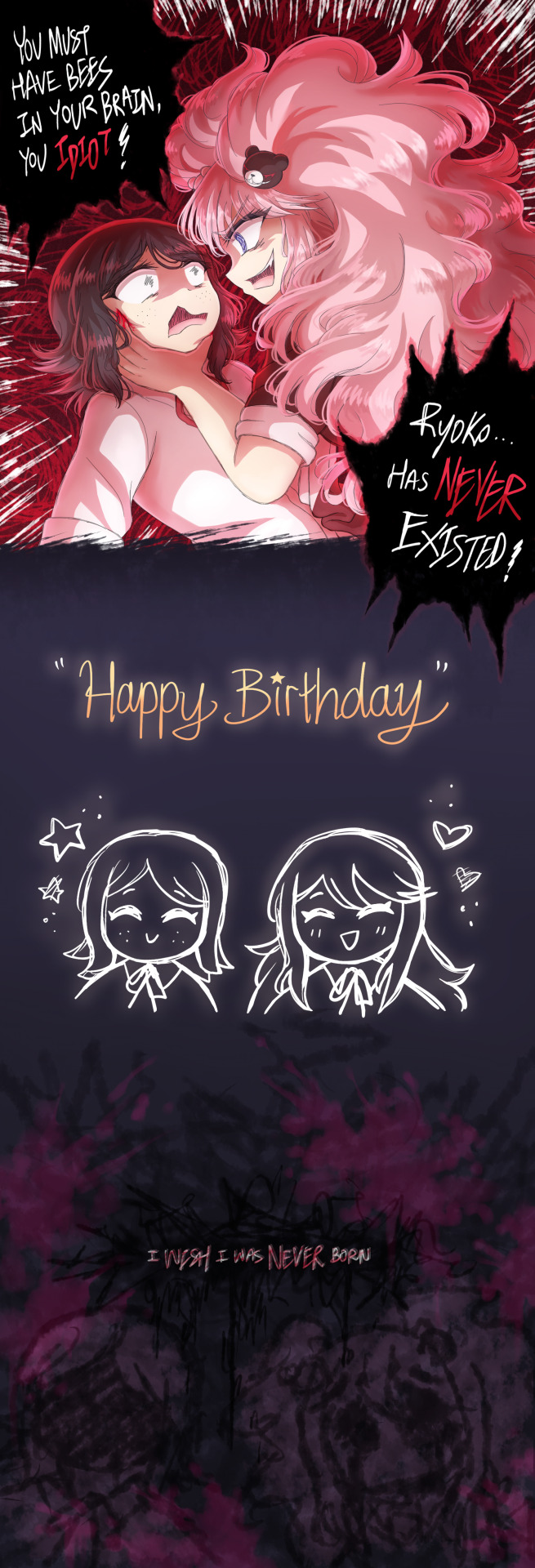
—
I drew this to cope with my birthday depression.
Took 5 months. I also wanted to beat my old manhwa from 5 years ago.
-- Long post ahead! It's my WIPS and thought process. --
Junko is my comfort character as she's the only character I know who hates her birthday.
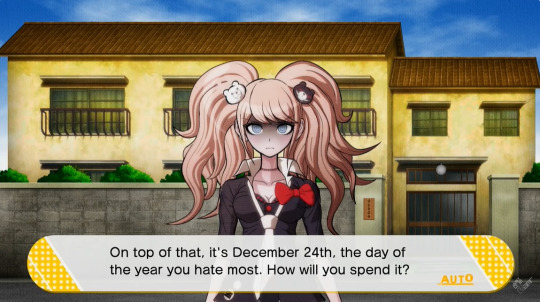
(Screenshot from Ultimate Talent Development Plan)
I know she’s a villain who has done a lot of bad things, but finding comfort and liking her doesn’t mean I excuse her actions.
A lot of painful feelings went into this, even in Mukuro's perspective so please respect it 🙏🏻
—
- WIPS & Thought Process -
—
Story Script Writing:
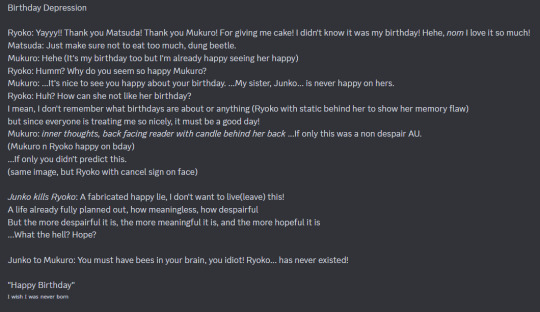
A lot of thoughts and feelings went into my script.
-I removed sentences like “For giving me cake!” as I wanted to do more showing than telling.
-“Why do you seem so happy Mukuro?” is changed to “Why are you smiling like that, Mukuro?” as I wanted the sentence to focus more on the thing Ryoko noticed. Mukuro would definitely be happy celebrating Ryoko’s birthday, and the new sentence would help to understand how Ryoko interpreted that Mukuro was more happy than usual.
-“good day” is changed to “great day” for greater emphasis of Ryoko’s happiness.
-A pun is done on “live”, I wanted this sentence to convey the complicated feelings of Junko. She doesn’t want to “live” a “fabricated happy lie” as it goes against her honesty moral. But there’s also a part of her that doesn’t want to kill Ryoko, as she doesn’t want to “leave” this “fabricated happy lie”. She wants to be happy as Ryoko, even if it’s a lie.
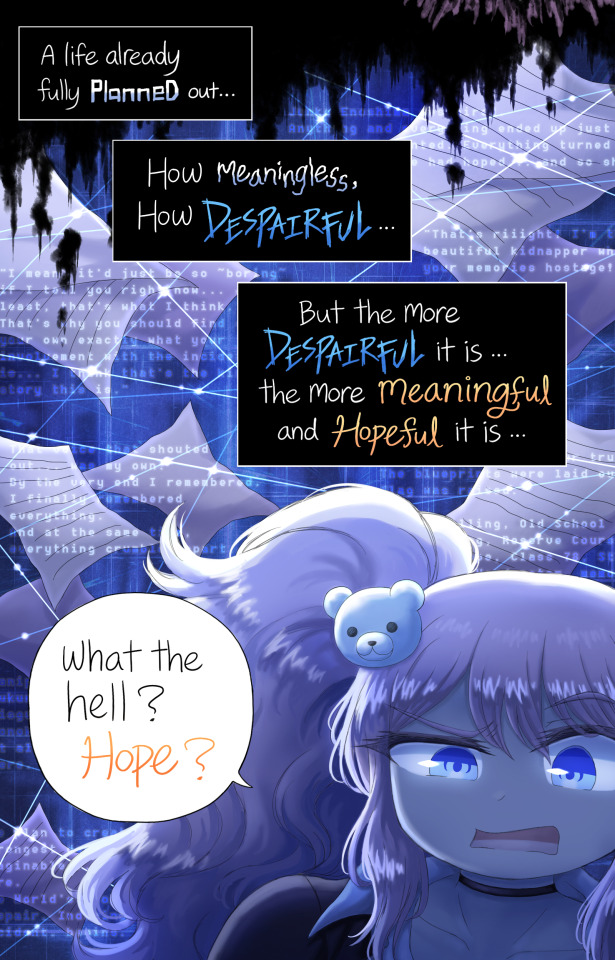
This part is a big reference and a reply to Danganronpa Zero.
The background texts are quotes from Danganronpa Zero.
Junko saying “What the hell? Hope?” is a reference to Danganronpa Zero’s ending:

Reading Danganronpa Zero feels like it’s saying something to me: “We are trapped in a loop of despair and hope.” and I’m replying with this part as a “Yes, I agree.”
Junko being confined in her mind is another thing I like about her too.
I feel the moment we are born, we are trapped, that’s why I ended this comic with “I wish I wasn’t born.”
The moment I’m born, I’m unwanted and worthless, a monster.
I’m trapped in my mind, in other people’s judgements and expectations, and there’s no way out.
I can’t just turn invisible and there’s always something for people to judge and hate. And that hurts when it’s something important to you or you can’t change about yourself.
But even with all the pain, I think of hope to carry on and it’s a loop to fight to live.
I think I make progress with healing but then I’d think wth I’m made to work on this. Cause my life is already scripted from the moment I was born— I’m scripted to have this trauma, this story made my personality and character so in the end I’m still trapped.
So that’s another reason why I find Junko a comforting character and why I feel birthday depression.
I thought of the story first before I thought of the characters who would play it, so I had to make sure it’s in character.
Things like if Mukuro would say “AU” or “Alternate Universe”. I felt since she spent a lot of time with Junko who knows a lot about these things, she would have heard of this and know the short form term for it. Especially since she had to be Junko at some point.
Since it’s a story about Birthday Depression, my thoughts instantly went to Junko then to Mukuro. It was the perfect story theme to write for them especially cause they are the despair sisters.
Plus, they are two characters I can feel their struggles and feelings deeply for, so I can write and draw deeply for this story.
Birthdays tend to be happy, and I felt the only kinda right time I can talk about my birthday depression would be on their day.
I felt suffocated and lost myself over the past few years, as I felt I needed to be happy no matter what. When I opened up about sadness and my struggles, people would hate and invalidate me for it. I feel my art reflects that, I don’t like looking back at my old art. It lacked my true feelings, but I feel I’m finding myself again in my Mirai Nikki and Danganronpa art.
For the past few years I tried to celebrate my birthday to try to make myself happy about it but in the long run it didn’t work. I appreciate everyone who celebrated with me all these years still, but now I’m trying to overcome it in another way— facing despair instead of trying to cover it with hope.
I think I’ve learnt a lot about myself and understood myself better through this comic’s process.
Layout Plan:
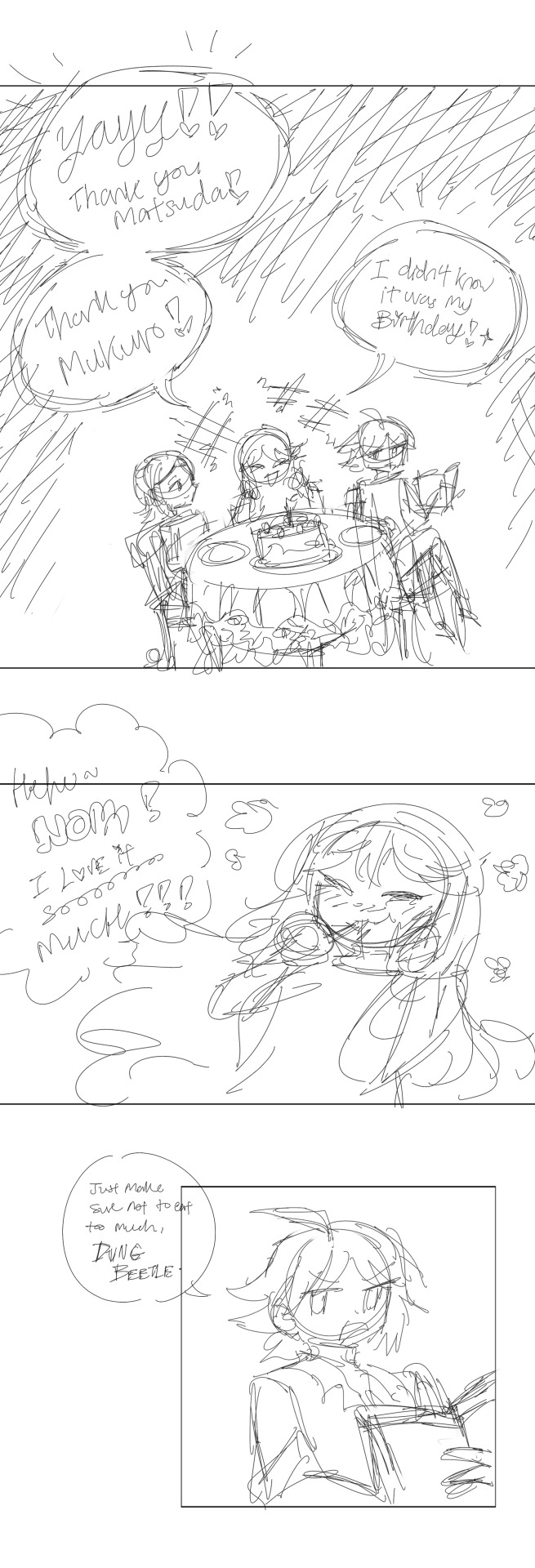
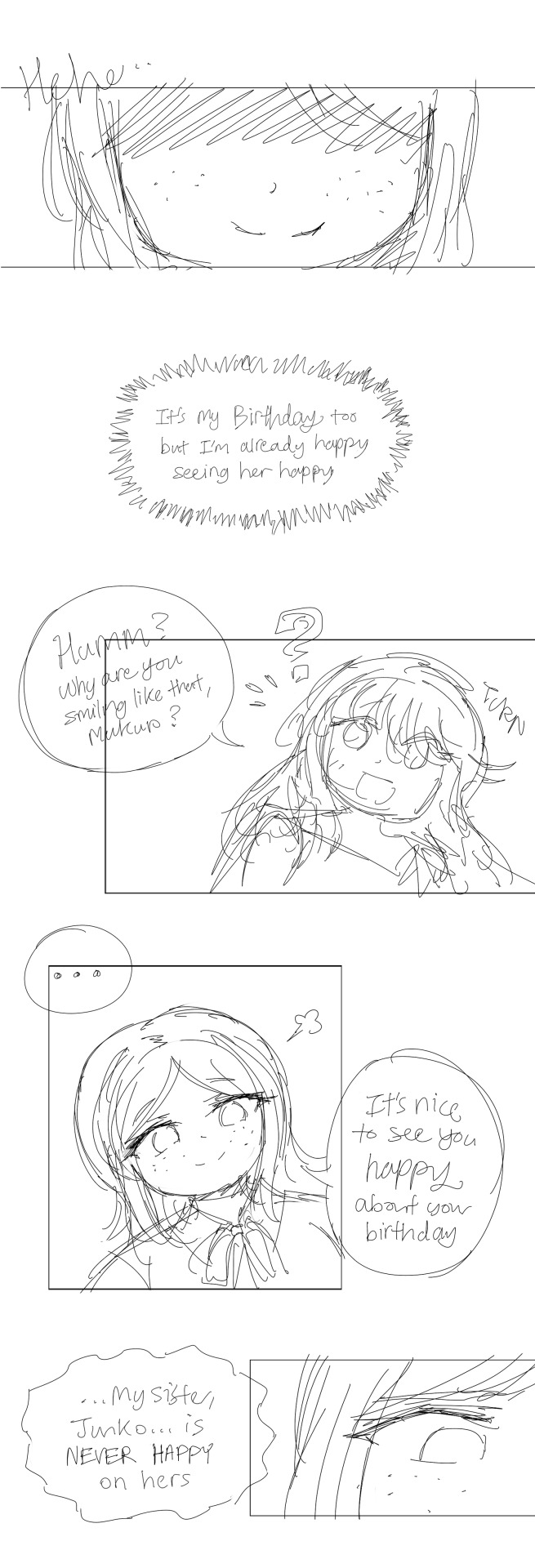
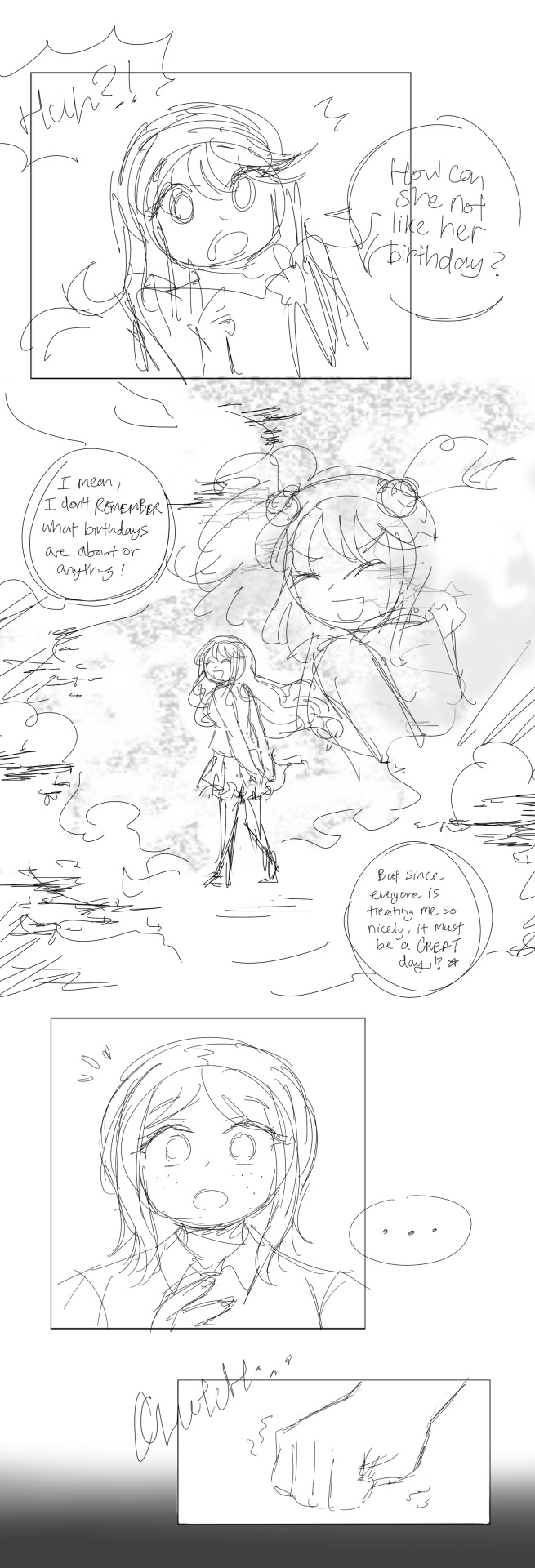
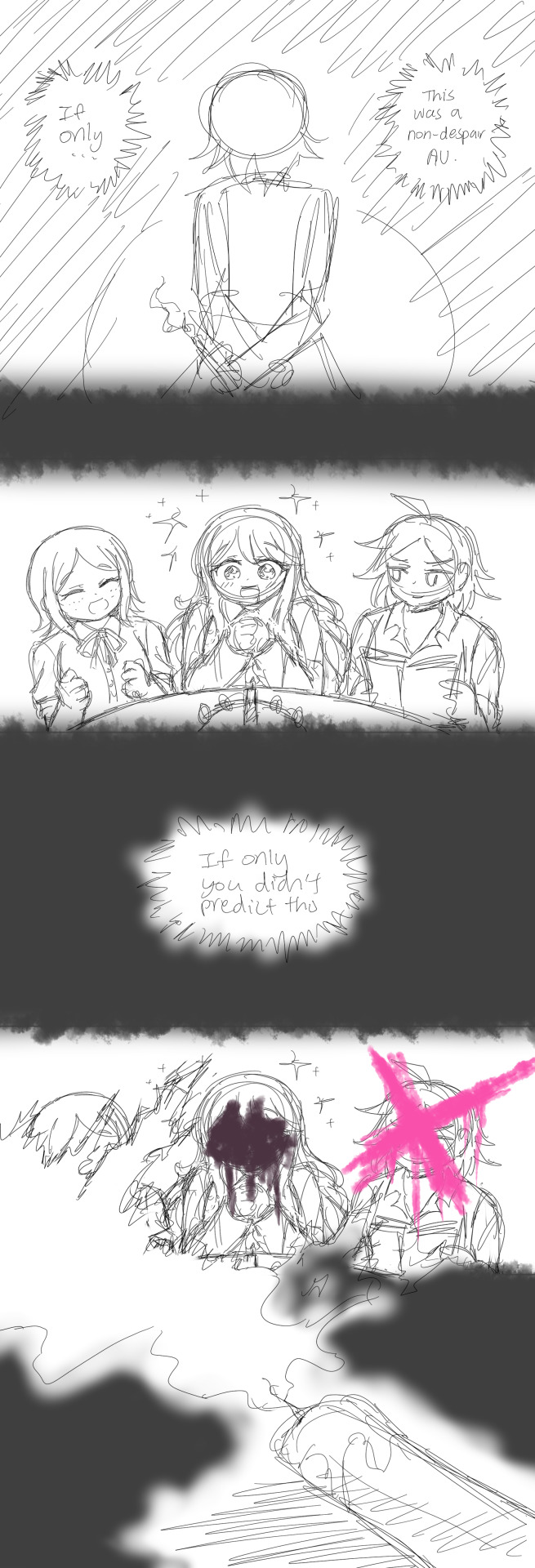
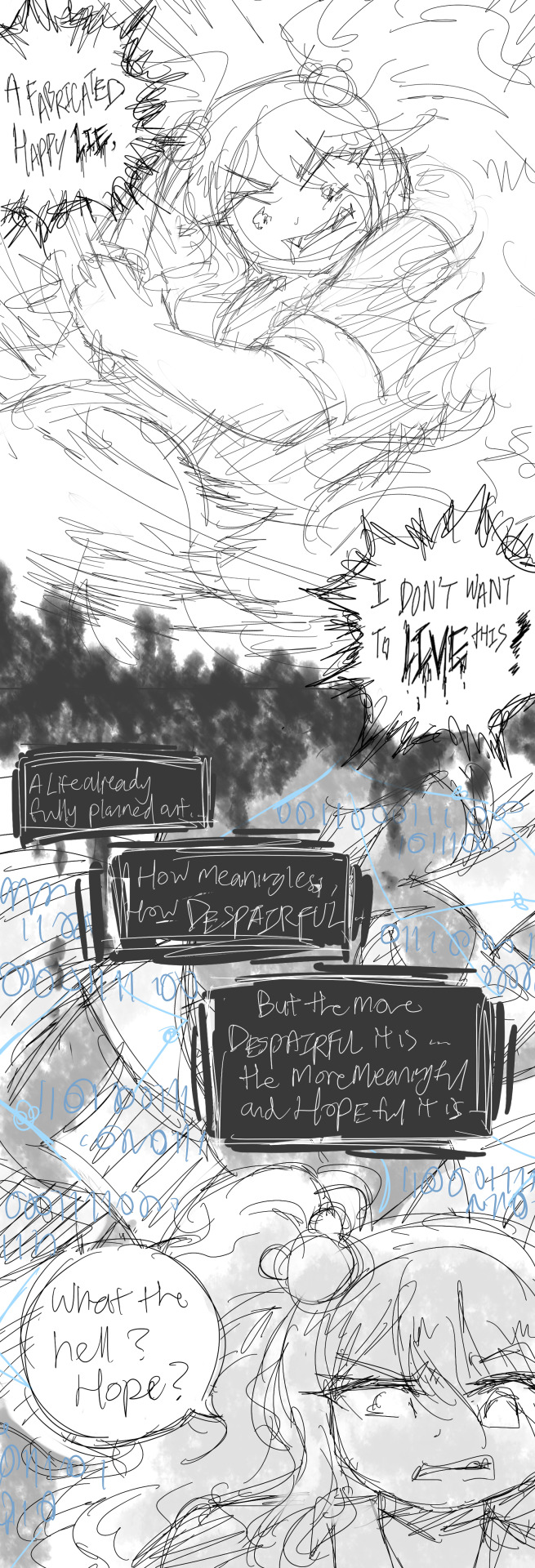
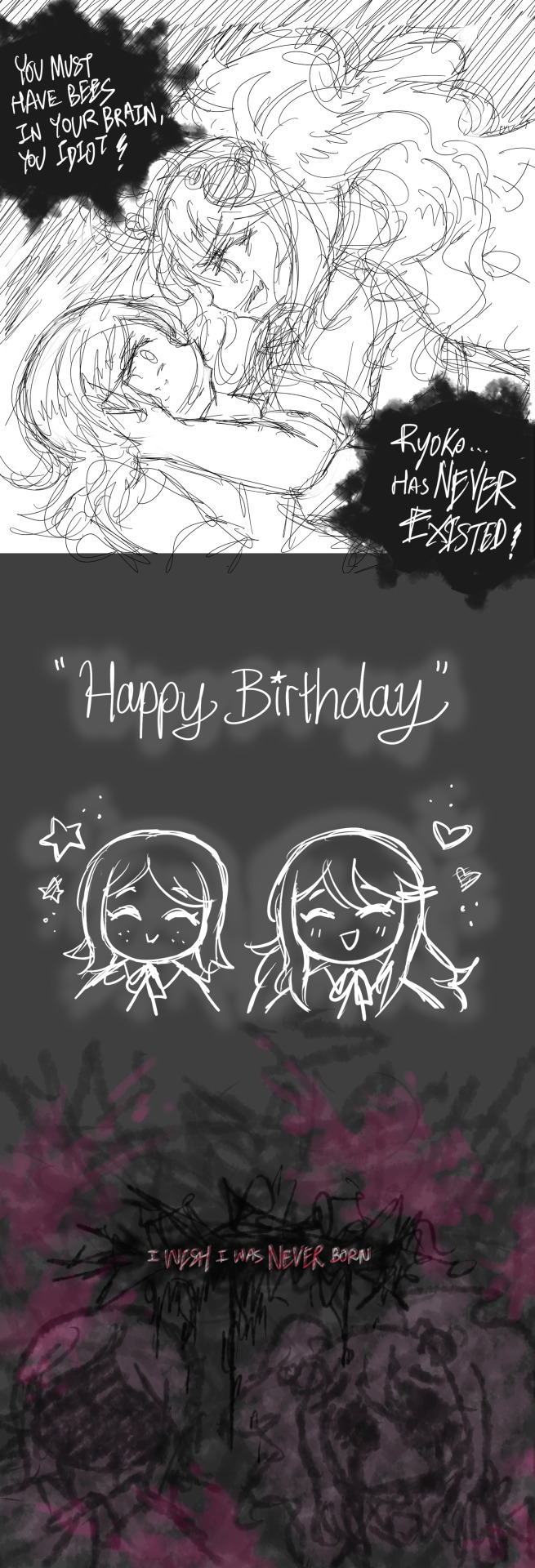
You can see that things were changed in the final from my layout plan X’D haha
In page 2, Mukuro’s 1st panel is changed so composition is better.
In page 3, after seeing Ryoko as Junko, Mukuro is reaching out her hand instead of placing it on her chest. I wanted it to feel like Mukuro wants to reach out to Ryoko at that moment, like trying to get a wish she knows isn’t real.
In page 5, binary code is replaced with texts from Danganronpa Zero’s story so it reinforces the idea of “a life already fully planned out”.
Lining Process:
I struggled with this part the most as anatomy and poses is not my strong point.
I asked my friend, Setsuya, for help with my poses and redrew the same pose many times for this comic. I really wanted to convey the feelings for this comic right especially since it’s very personal to me. Big thanks to her for helping me so much, I feel I improved a lot from this! 🥺 <3
1st panel of 1st page is the hardest to draw, I’m laughing at my first try of Mukuro who looks like she’s forced to be there 😂:
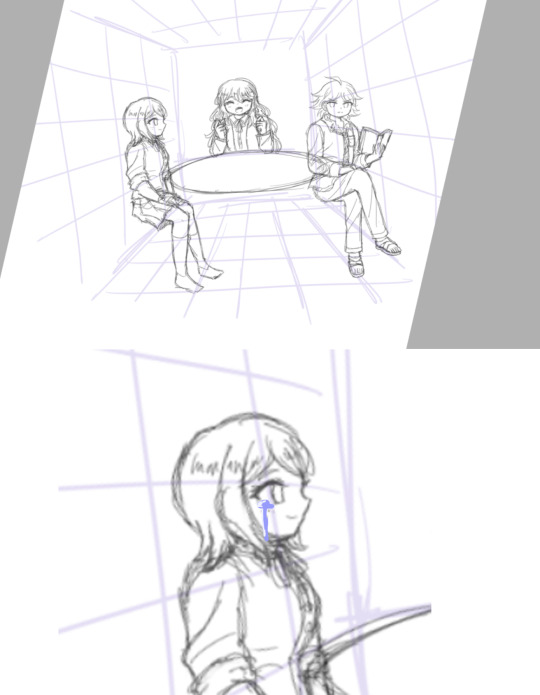
With suggestions from my friend of how to improve, I tried to improve everyone’s poses:
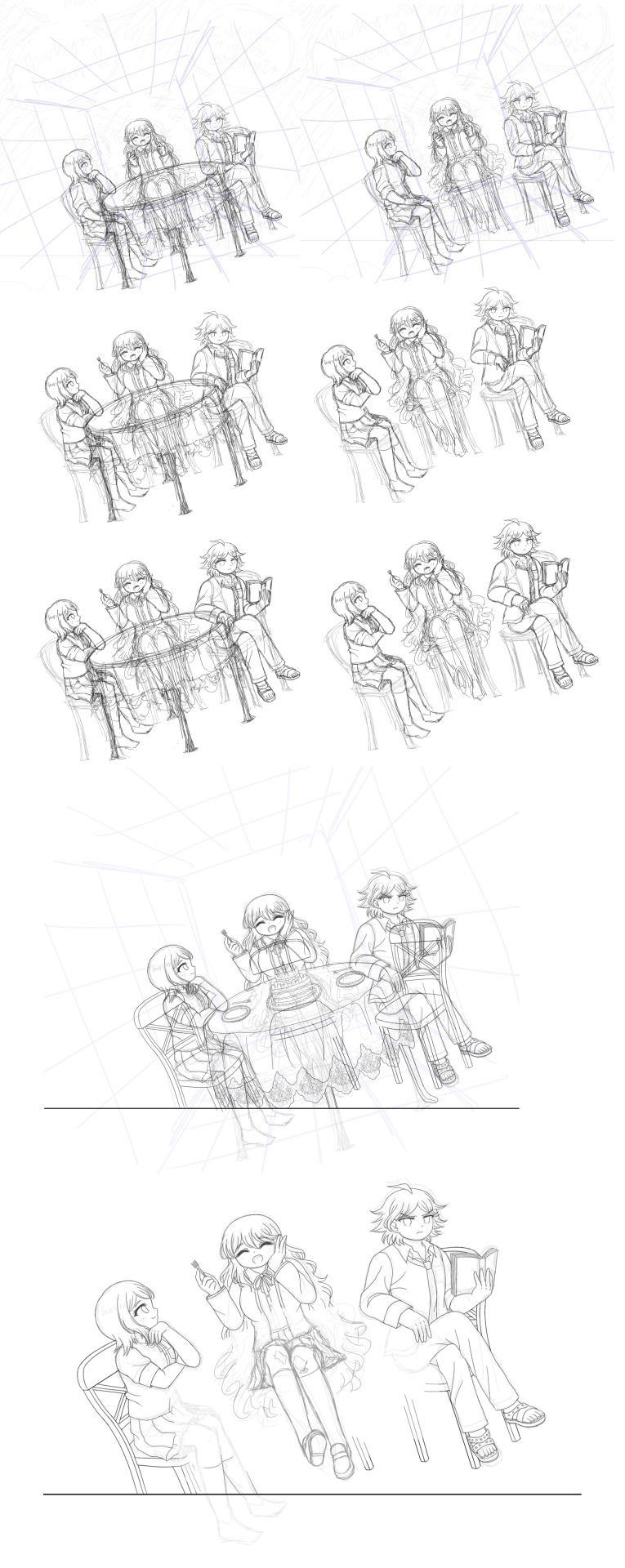
^
Mukuro’s pose was changed to look more fondly at Ryoko, happy to be there and relaxed haha.
Ryoko’s pose was changed to look more delighted and happy about the cake (Which helps to convey the line I removed from my script, “For giving me cake!”)
Matsuda’s pose was changed to look a bit more annoyed about still cares for Ryoko (shown by him still looking at her from the corner of his eyes even though his head is turned away)
And haha I forgot Ryoko’s legs can be seen due to the table frills being transparent, so I had to go back and draw her legs X’D
For this panel, a lot of thoughts went into what things I should place, how they are placed, and what kind of items it should be e.g.
I wanted it to tell the story of what happened before all the characters gathered here, what their feelings are towards each other, and how they are like as individual characters :3
I was thinking Mukuro and Matsuda love Ryoko so much they spoil her by buying a giant cake haha X’D So that’s why there’s a plastic knife instead of a real knife— to show that the cake was bought.
I think they decided not to cook as they would fight about it… (idk if they know how to cook tbh)
I chose strawberry shortcake cause white = purity and red strawberries = blood X’D Kinda like Ryoko-
I was about to draw neatly cut and placed cakes but I think... Ryoko is bad at cutting… X’D so the cakes are lying flat with the cream a bit splattered on their plates.
The table cloth, spoons and plates are all elegant and neat cause Mukuro prepared it for Ryoko :3 I don’t think Matsuda would be able to do that since he seems to not be a tidy person X’D but I do think he probably decided these items and arrangement with Mukuro :3
Here’s a random joke Matsuda + My roughly drawn Promised Neverland manga cover before I squeezed it on to his book haha:
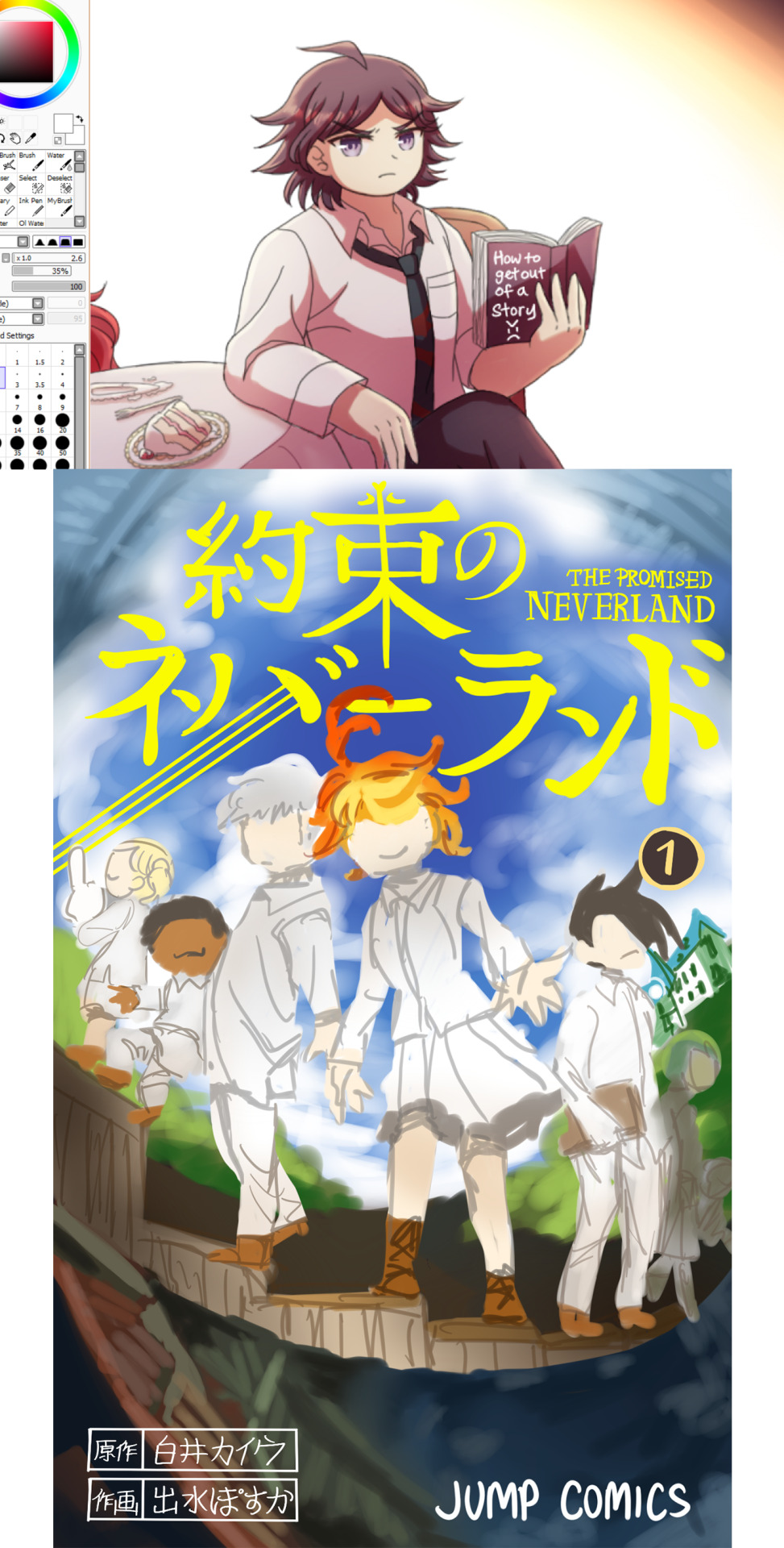
I was going to make Matsuda read Megaman at first like in canon, but I felt making him read “Promised Neverland” was fitting as it helped me bring some foreboding to my happy setting. Like the promise never landed cause I’m going to break my happy promise/premise X’D
I felt it was fitting too as Matsuda wasn’t met with a good fate like the Promised Neverland children.
Plus I feel Matsuda would like a genre like that, or perhaps he wouldn’t mind anything as he is a laid back character.
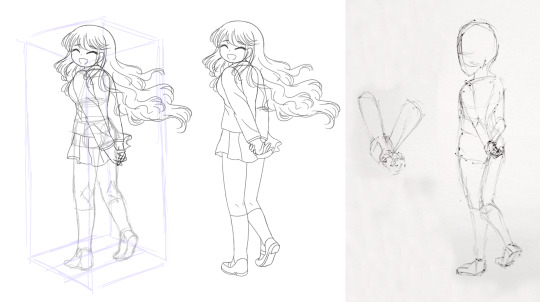
This pose was changed so Ryoko would look more reserved and have less of a romantic vibe? Cause the intertwined fingers felt a bit more romantic and off to me, as it wasn’t the vibe I was going for.
Feat. The paper sketch is my friend helping me with anatomy X’)
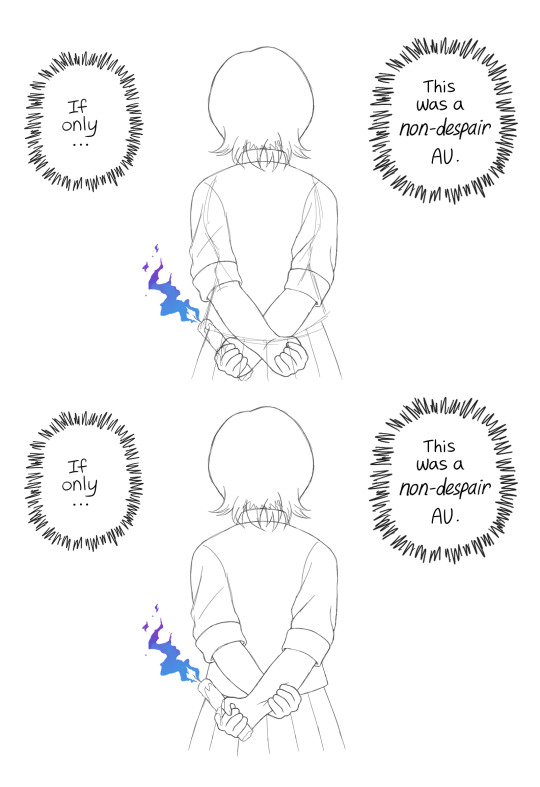
While writing sentences and drawing for Mukuro’s scenes, I was thinking of experiences I’ve gone through before and the feelings I felt then.
The way I wished things could be different. I kept having dreams of happy endings I wanted to happen but then I would wake up to the tragic reality and cry.
The way I was suffering on the inside but still held on to this thing I perceived as “Hope” even though it was killing me and could be seen as “Despair” in another POV/or I already knew it was bad for me but it was also my only hope.
Symbolisms for this panel:
Carrying a candle-> holding on to hope/a wish.
Candle not blown out -> Mukuro's wish didn't come true (blowing out a candle means bringing your wish on smoke to the good spirits above to grant your wish) , her hoping leading to despair.
My pose was changed here as it is more natural for the hands to be like that, plus the other hand holding on to the arm greater empathise how Mukuro is holding on strongly to this candle.
The candle is melting and the wax is getting on her hand, burning her. Still, she refuses to let go which empathises how much she needs to hold on to this. Even as she grabs her own hand causing more pain from bleeding, she still needs this “hope.”
Some colour tests for this panel:
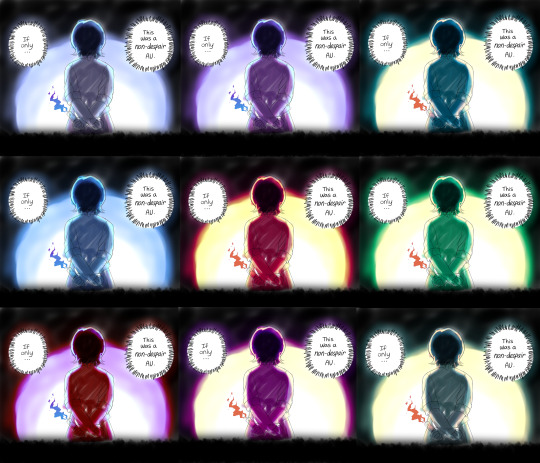
I was considering blue fire because blue fire is stronger than red.... but then if it is a wish of hope, I was considering yellow too... but maybe it would be too happy?
Mukuro is feeling sad and wishful in this panel.
I ended up going for blue fire which gives off yellow light for a purposeful contradictory colouring— to show that what is perceived as despair can also be perceived as hope.
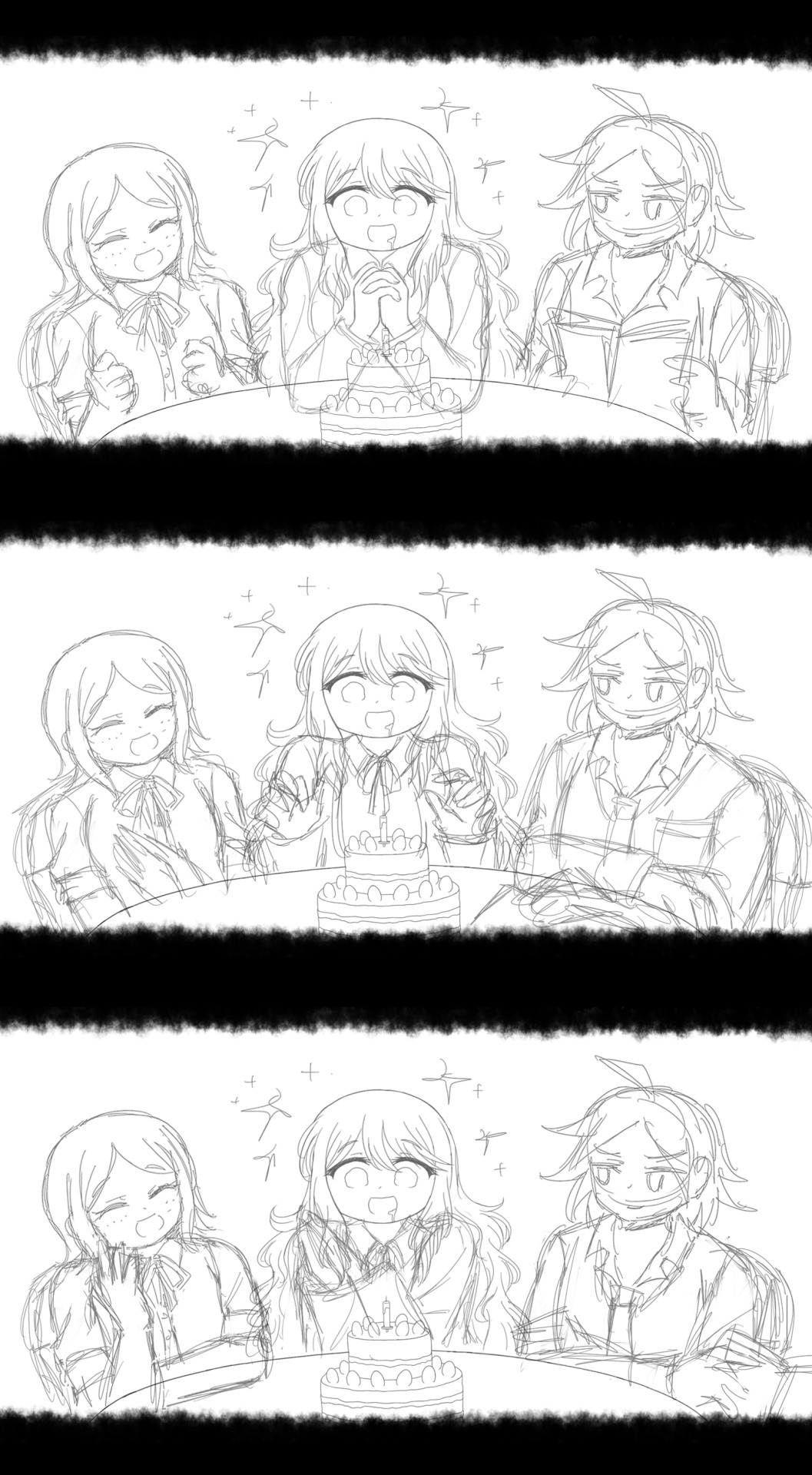
^ Some exploration for the poses here so I can figure out which conveys what I wanted to convey the best. I like the poses where Mukuro is reserved happy, Ryoko is more playful(?), Matsuda is more relaxed.
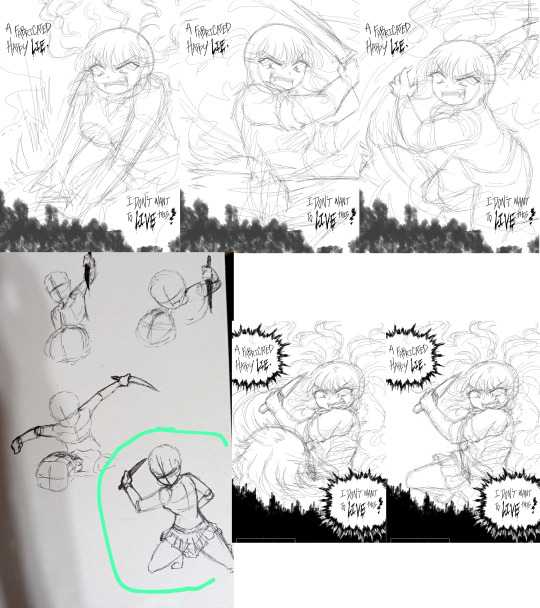
^ Exploration for the Junko slash pose. Ended up just going back to the original pose I had planned for the layout.
I found this super hard to draw as I’m not good at anatomy, drew it quite a few times and deleted as I couldn’t draw it right. In the end, my friend drew that pose reference which helped me get it right in final!
Reasons why I chose the original layout pose in the end:
Strangle pose-> I don't want to strangle Ryoko, not because it’s too violent or graphic or that she's 🥺uwu and I can’t kill her-
I just feel Junko doesn’t completely hate Ryoko... a part of her wants to live a happy life after all
But she can’t, that's why the words "A fabricated happy lie, I don’t want to live this!"
It's a lie and it's against her value (honesty).
Sword slashing pose-> Junko is directly jumping towards and has no hesitation slashing Ryoko. This feels off cause it’s too violent which doesn’t convey the message I want.
Sword is also stronger than knife, which would hurt more.
When I see the knife and how the body is twisted a bit away in the original layout pose, it works better as I can see some control to the slash so it's not full on hatred and anger towards Ryoko.
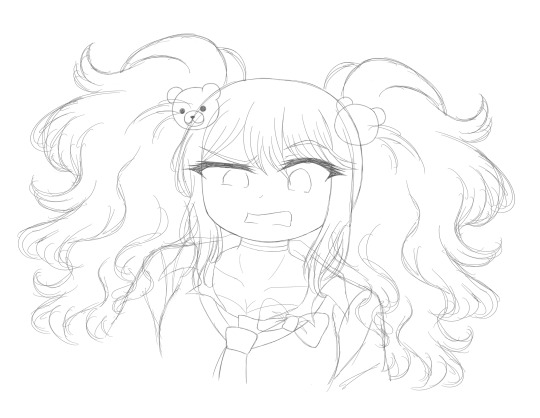
Random full drawing of this Junko before I cut it off for composition.
I find it easier to get the anatomy right if I draw the full thing and draw through everything.
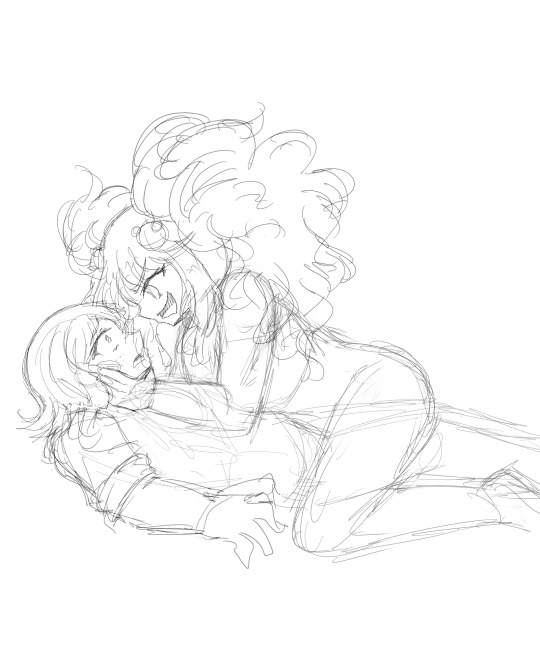
^ I’m super sad at my failure for this :,) I didn’t intend it to be like that 😭
It’s too hard for me to draw, so my friend helped me again and I chose a pose and studied her pose and drew the whole pose again:

I chose the 1st pose because the angle of the faces there best shows both character’s facial expressions and the emotions are the most important for this scene.
Plus 3/4 angle is better than the flat side view one as it helps make this scene more dramatic!
My friend helped me with the position of Junko’s tie:
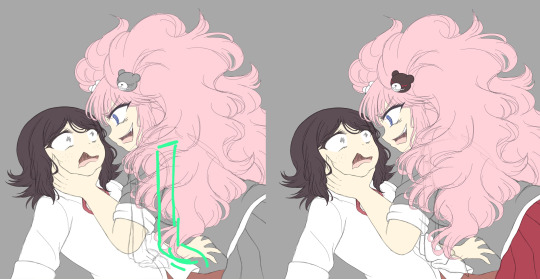
reached max images for this post so,
WIPS continued in another post
#ryoko otonashi#junko enoshima#mukuro ikusaba#danganronpa zero#dr0#yasuke matsuda#danganronpa fanart#my content
184 notes
·
View notes
Text
Waiting for abnormality dancing girl version Ft Ryoko Otonashi.
0 notes
Text

suck him dry (literally)
original
#danganronpa#MatsunashiBloodThirst#matsunashi#ryoko otonashi#yasuke matsuda#yasuke x ryoko#danganronpa 0#danganronpa 0 spoilers#cw blood#danganronpa zero#waveglox's art
204 notes
·
View notes